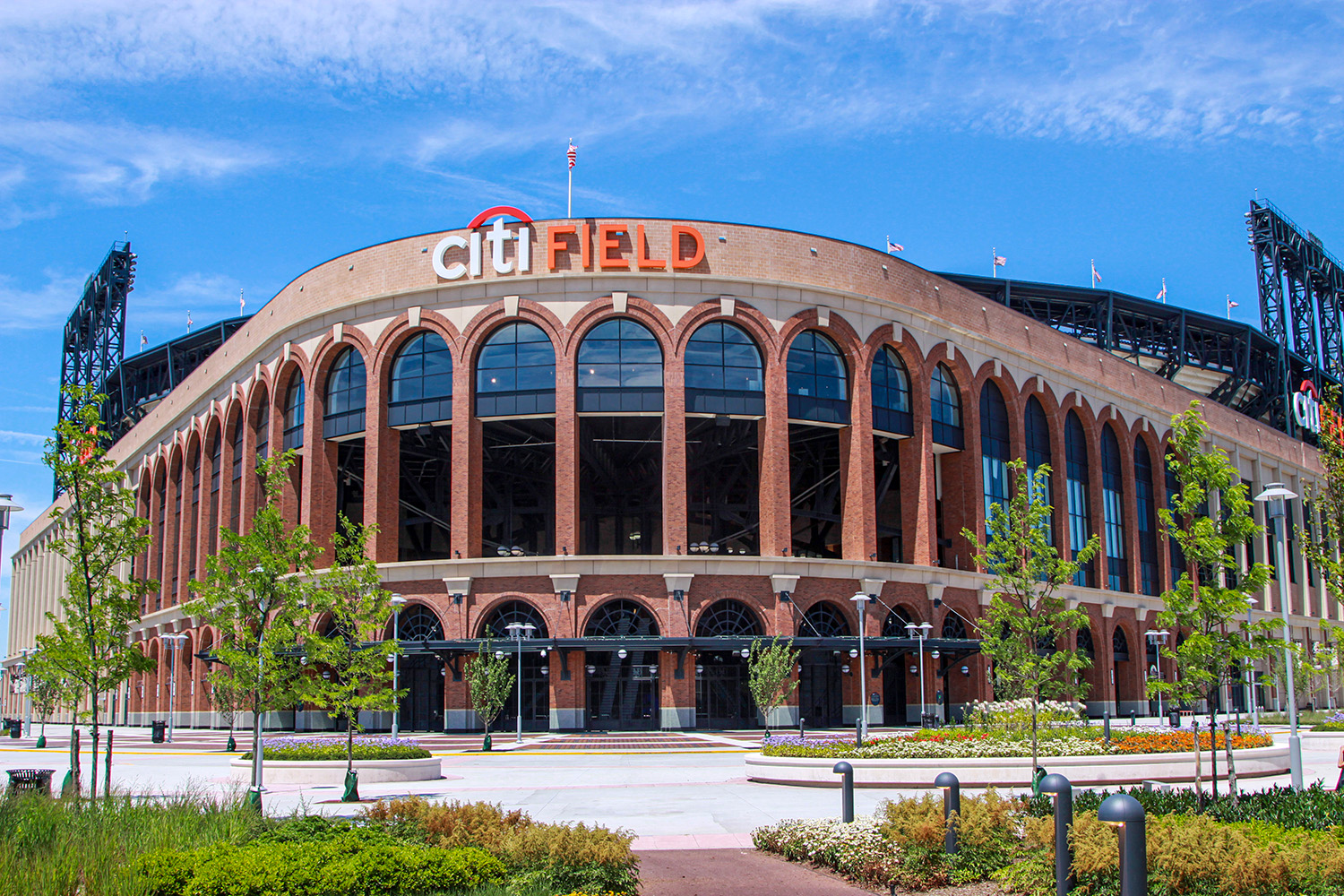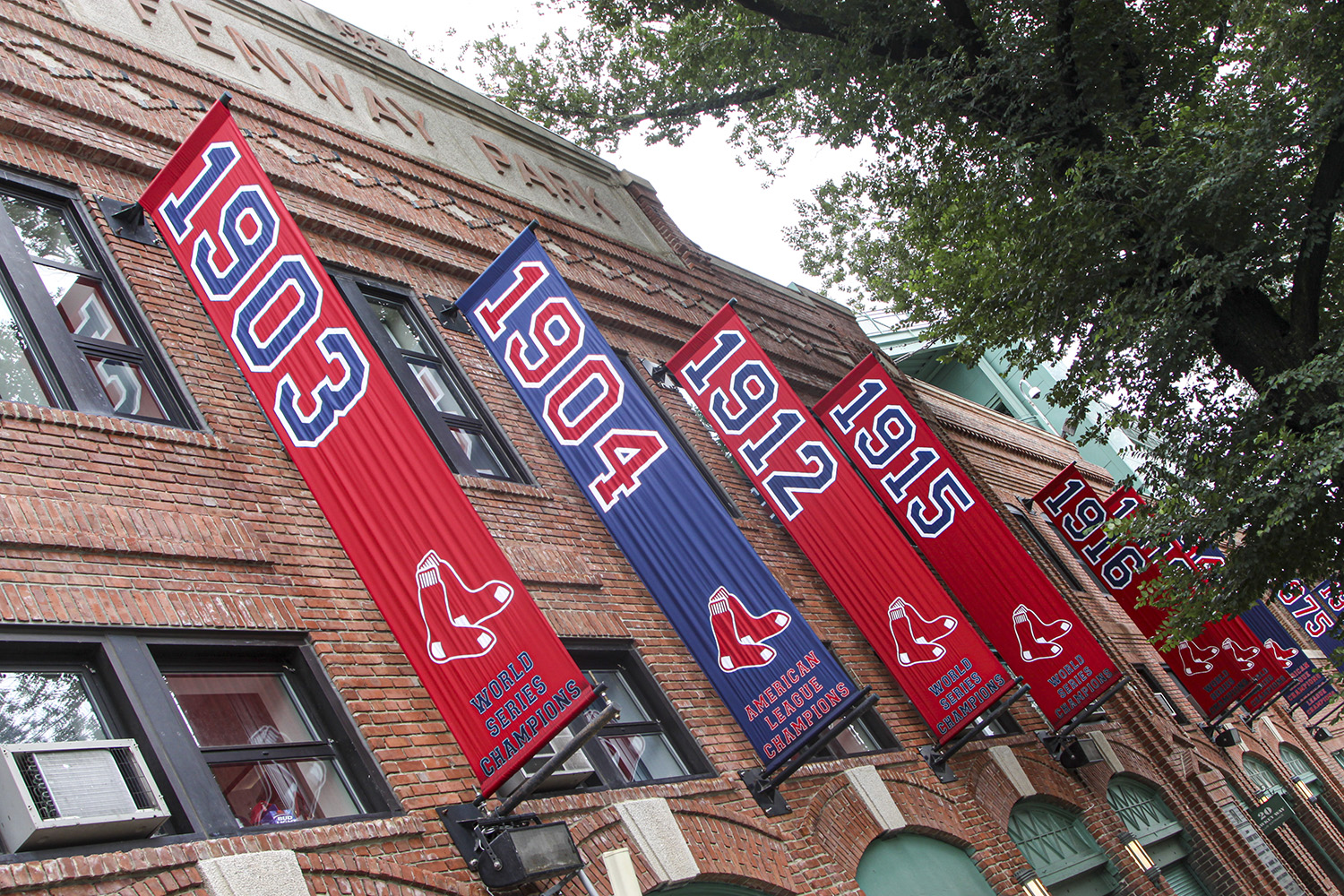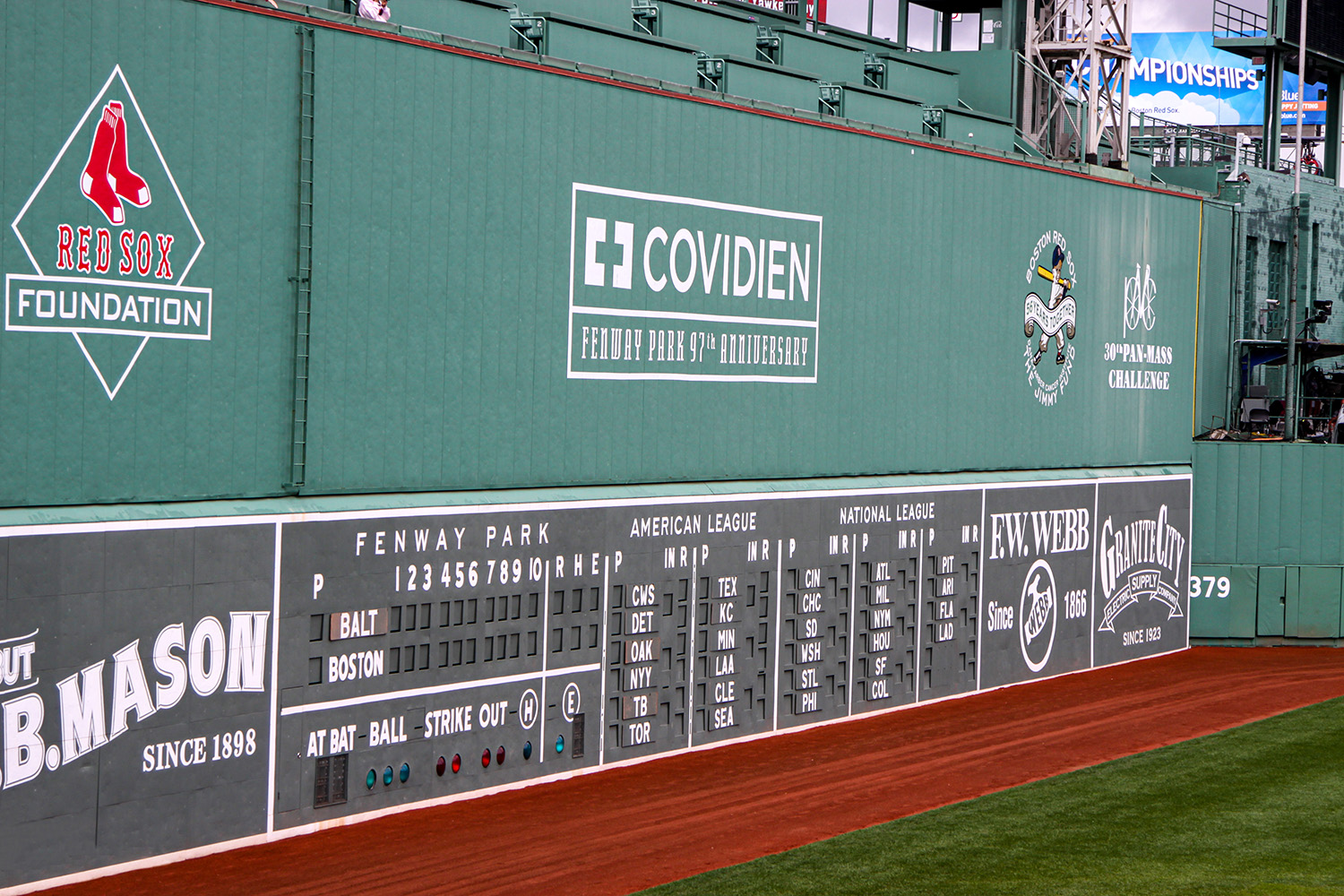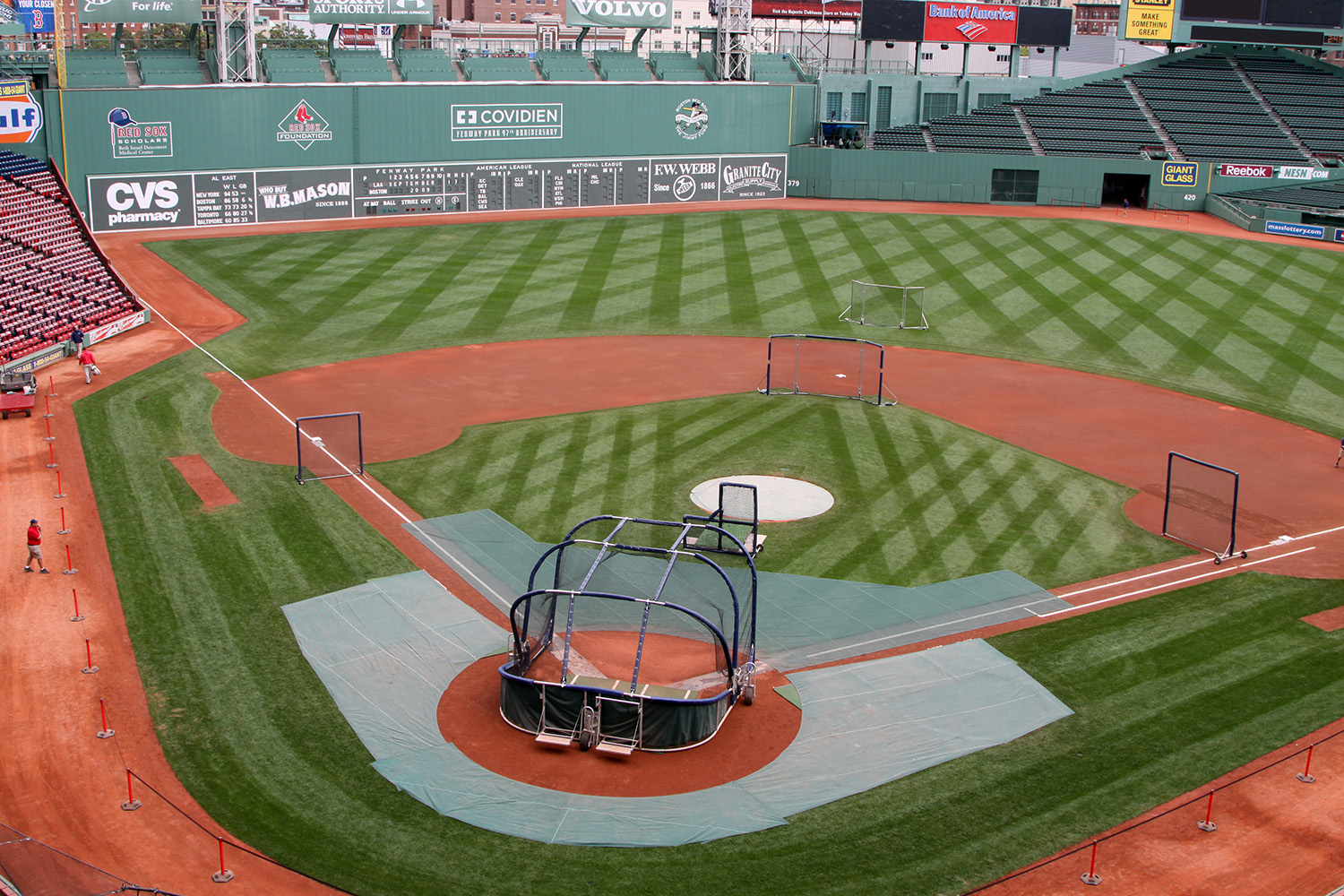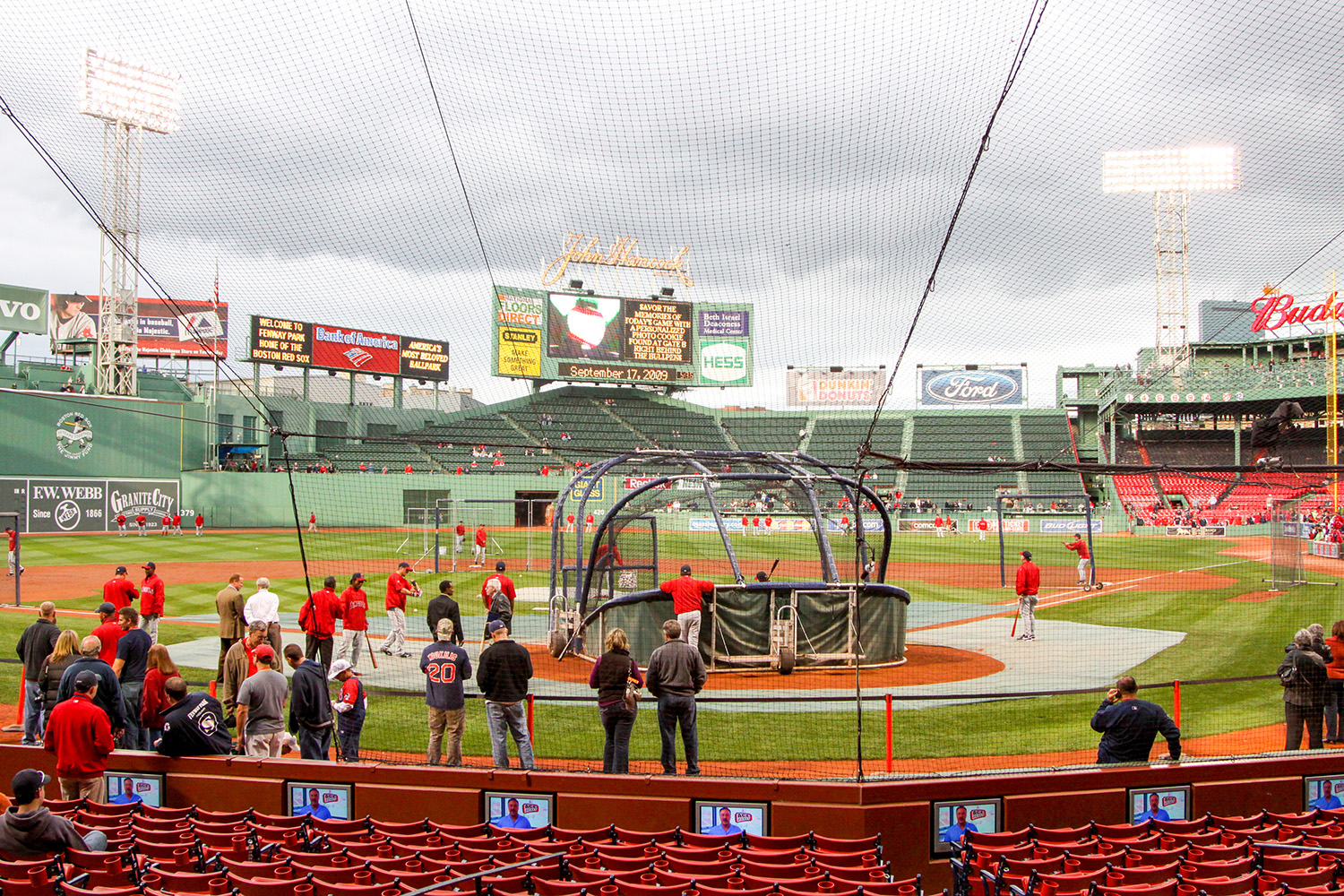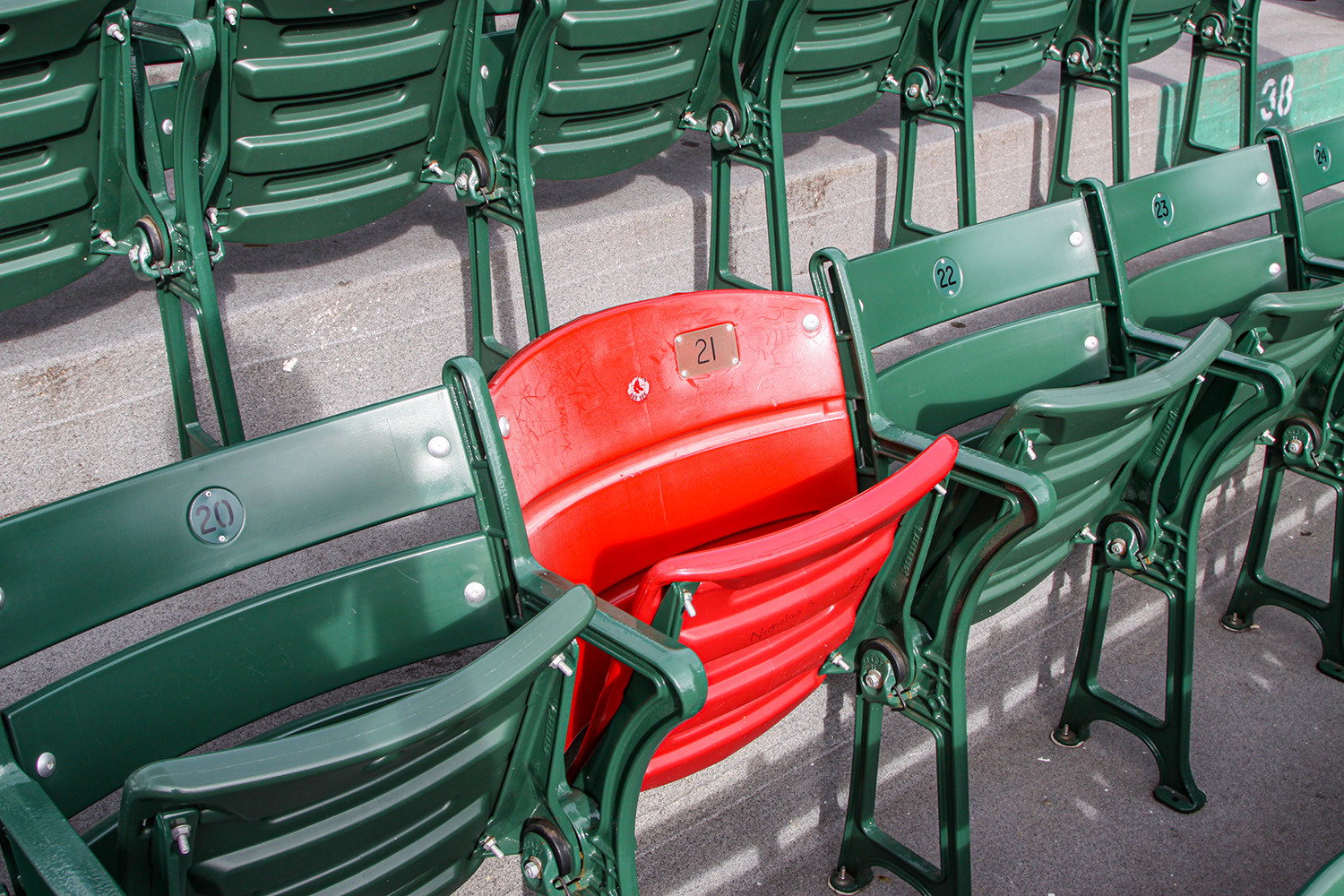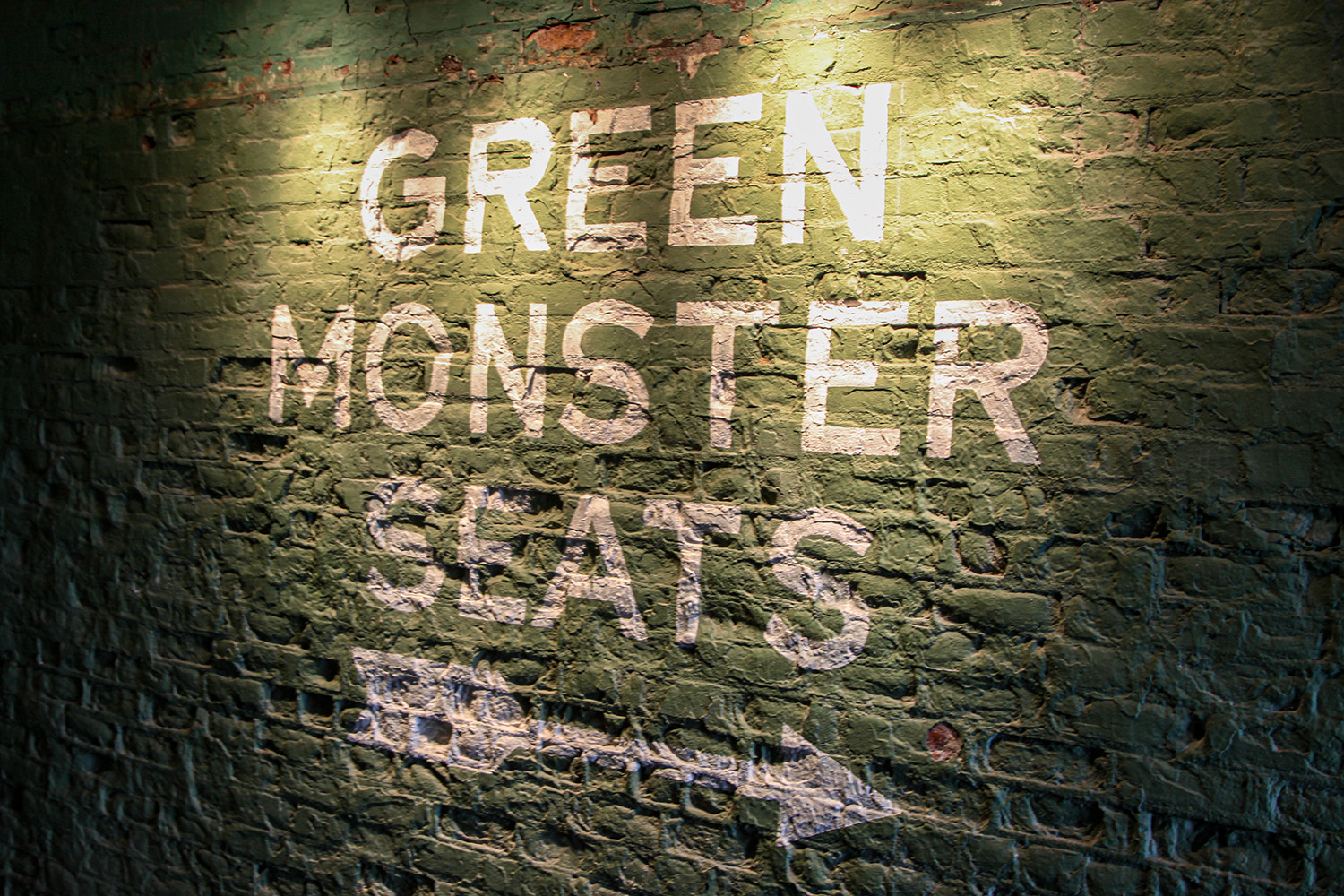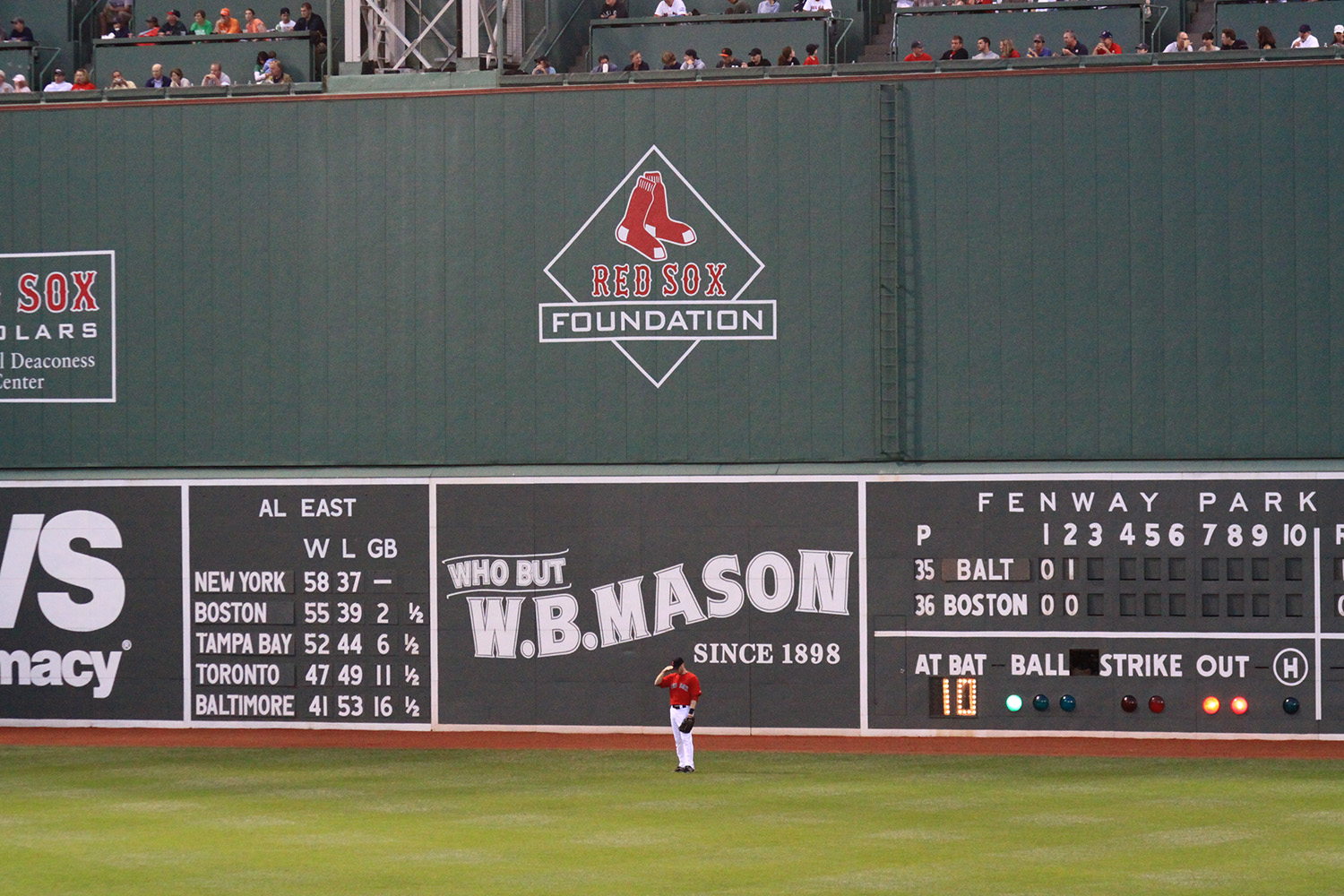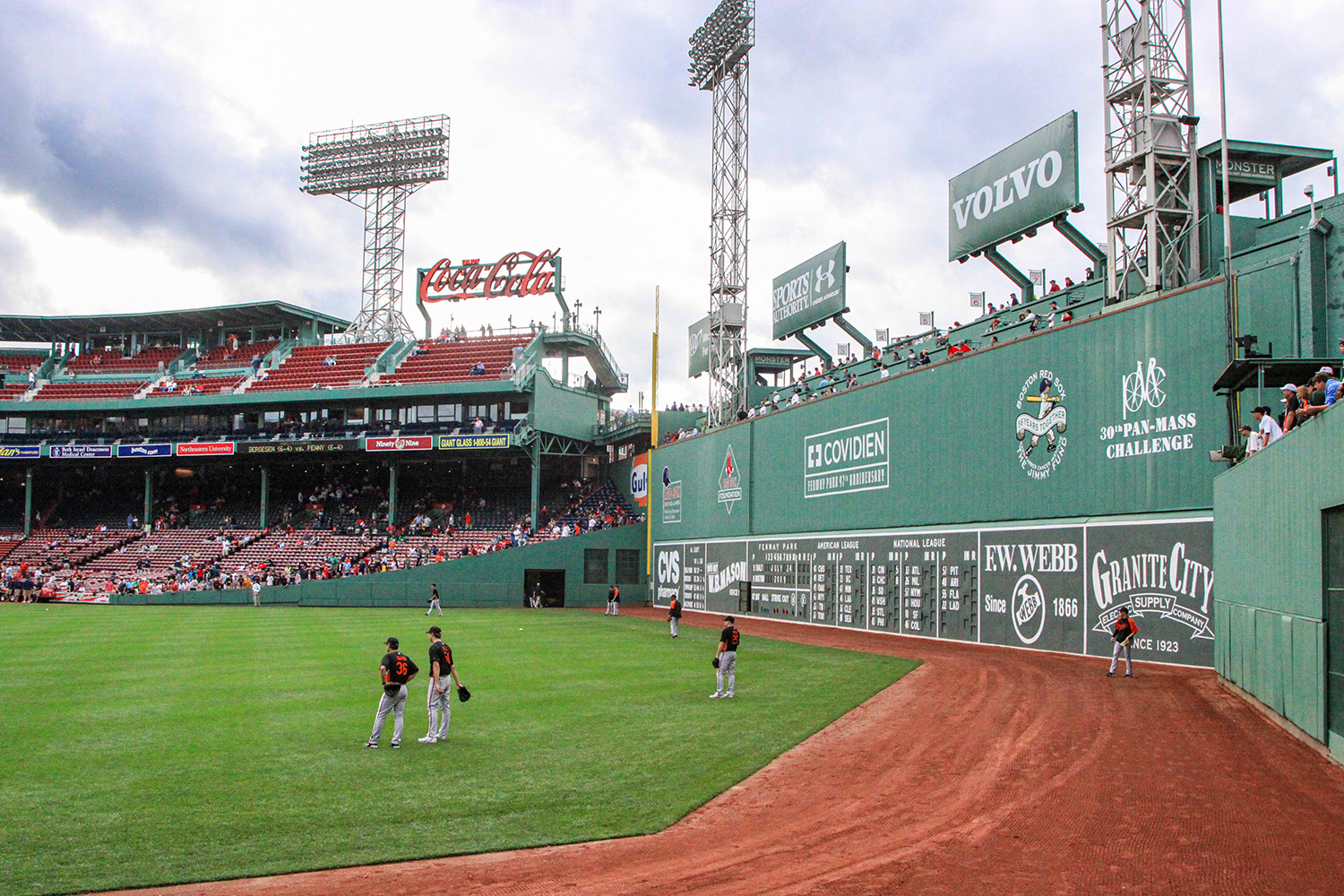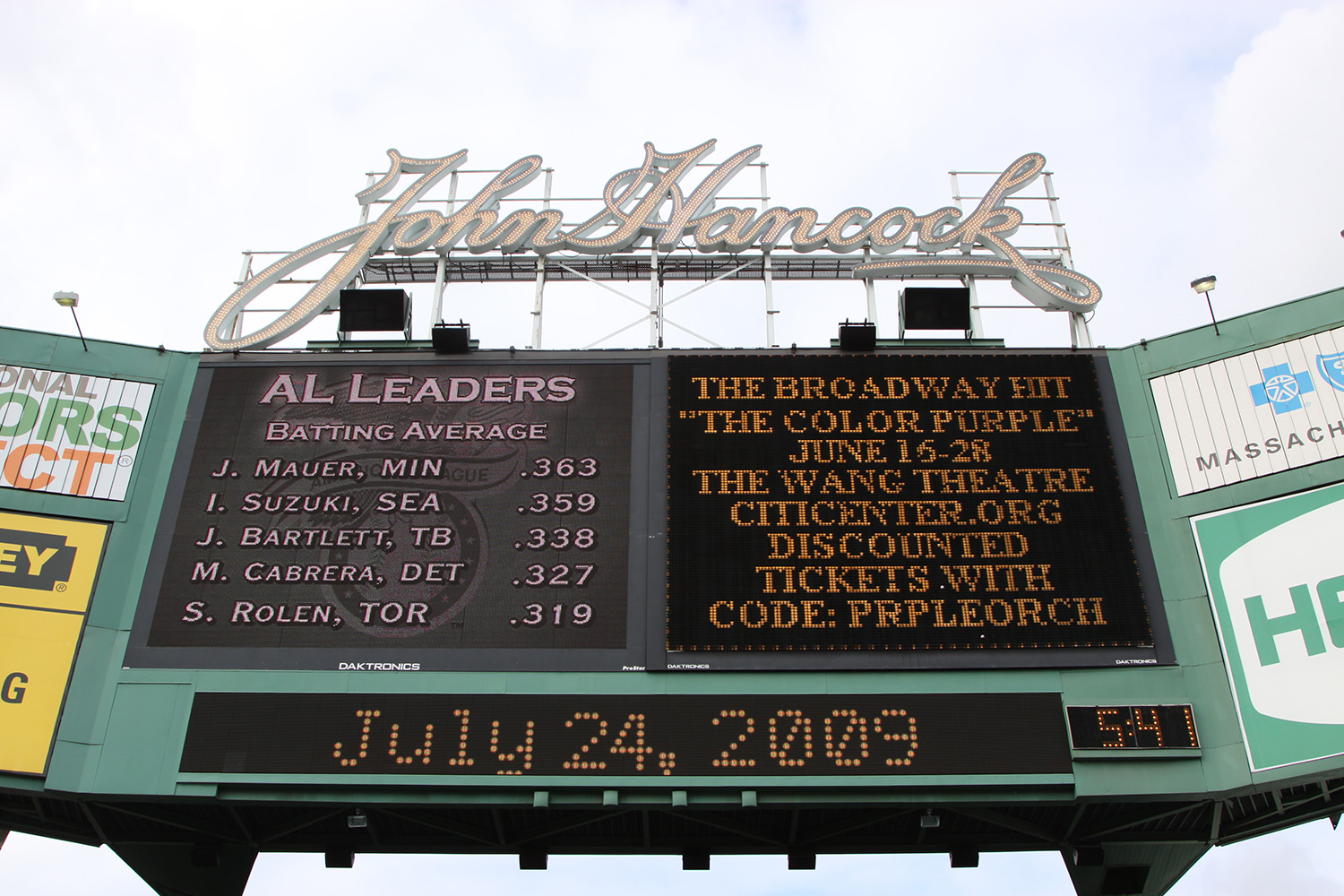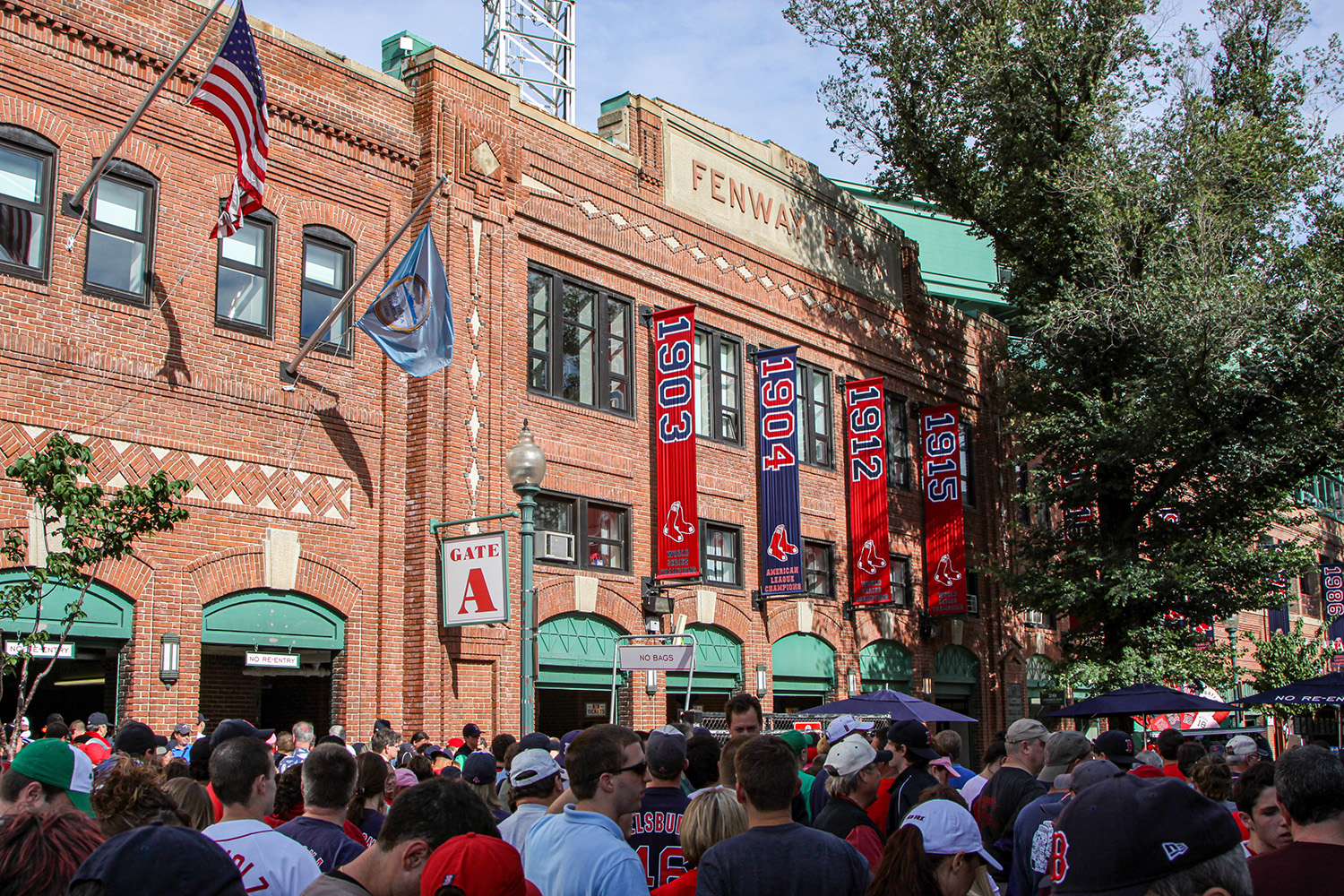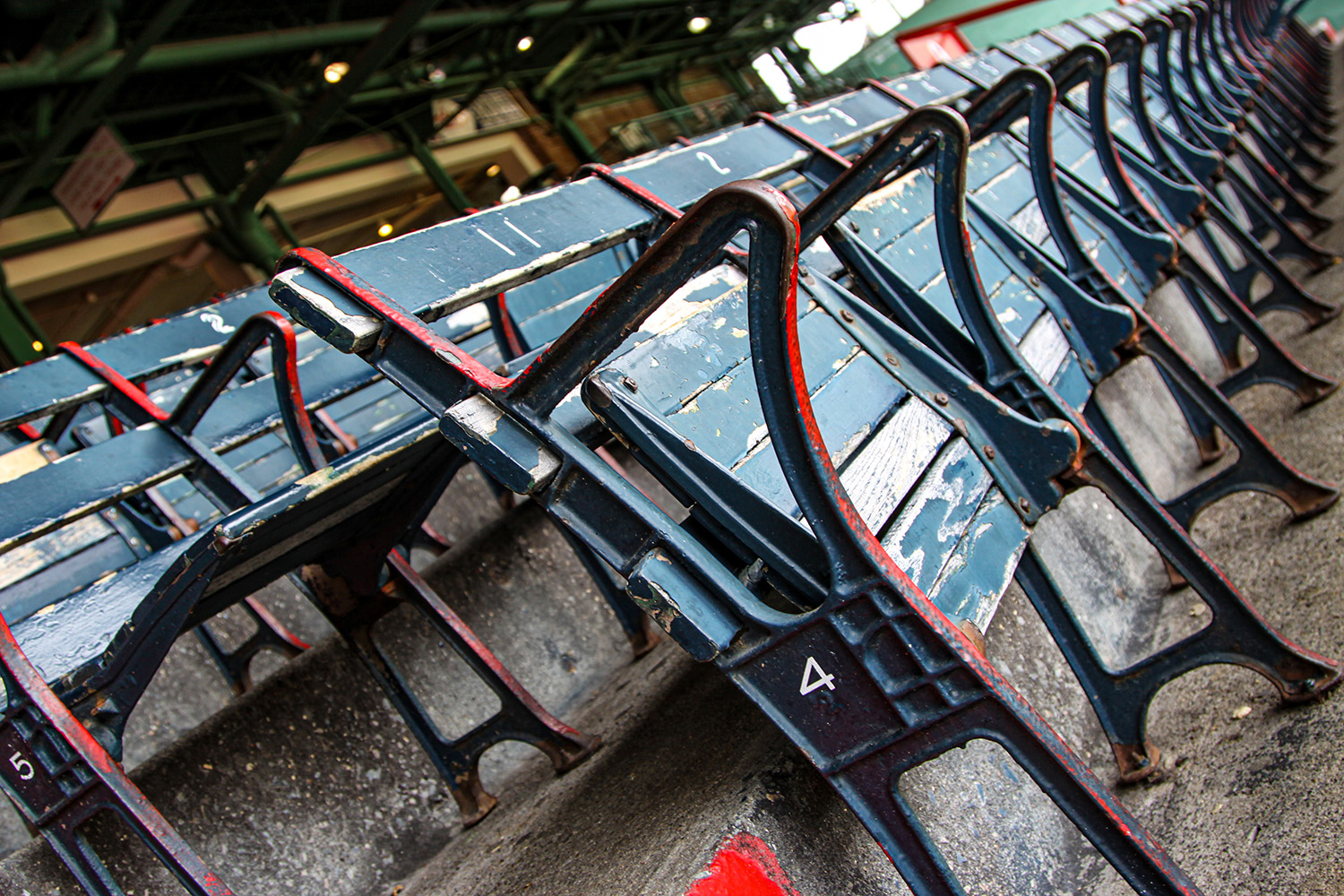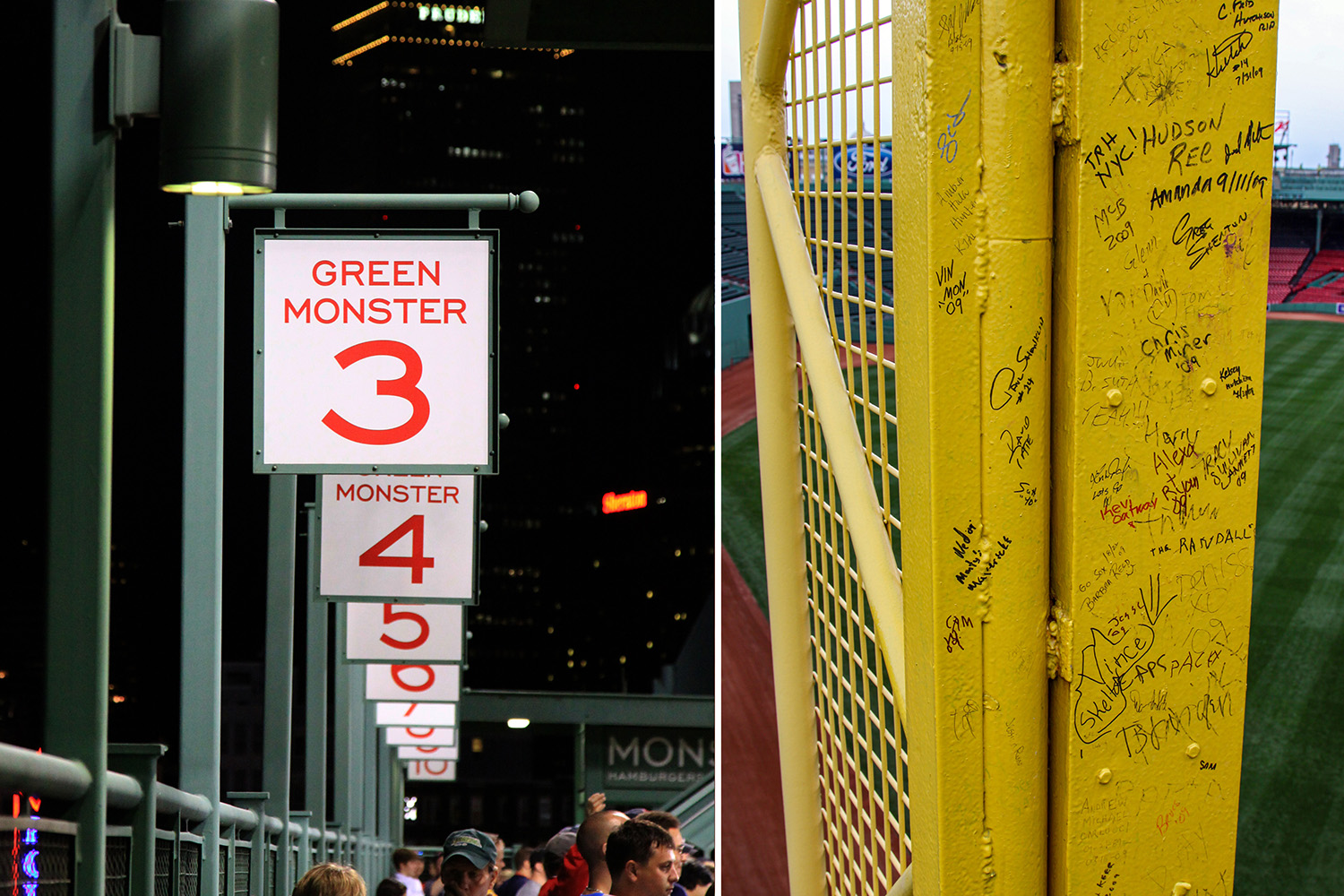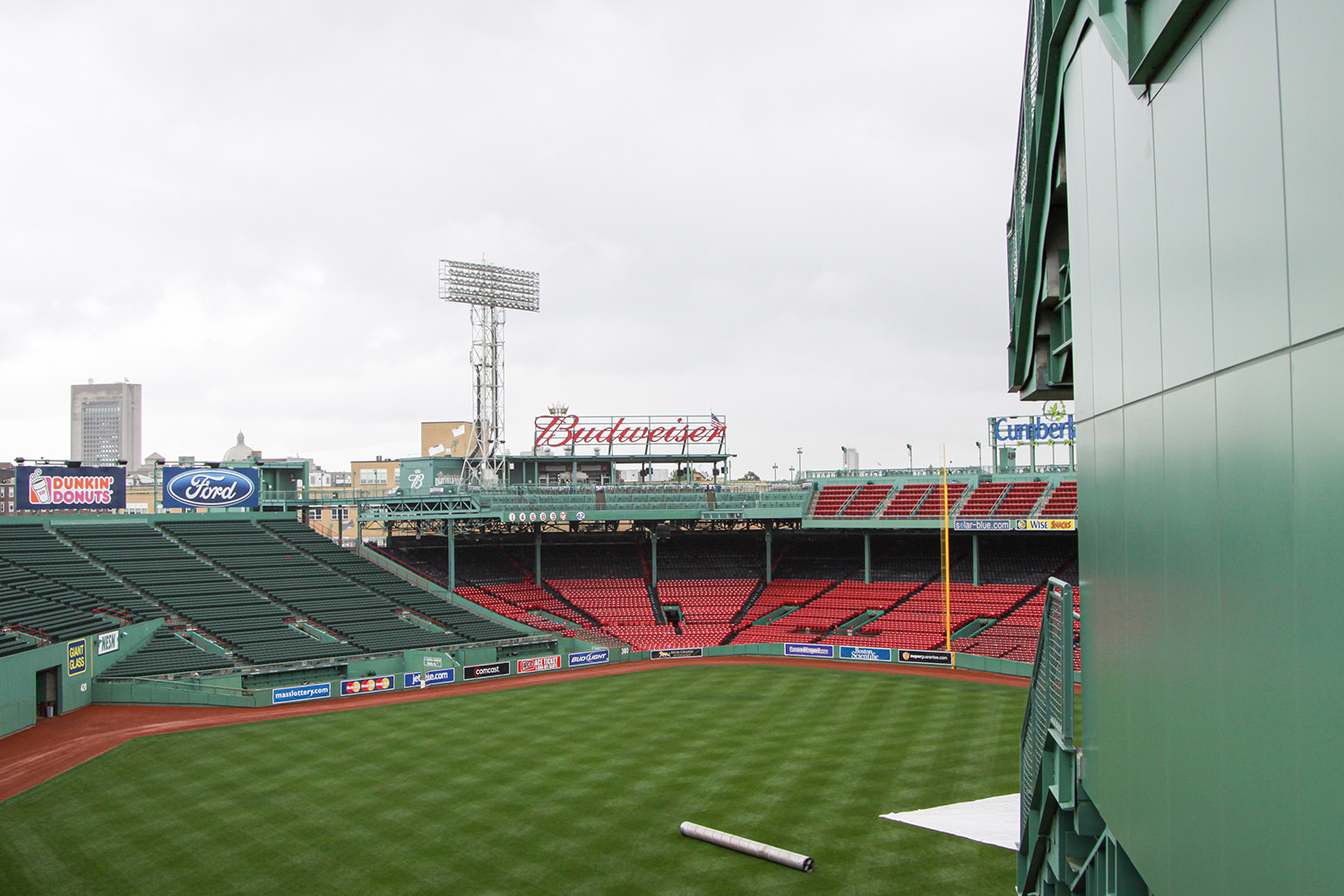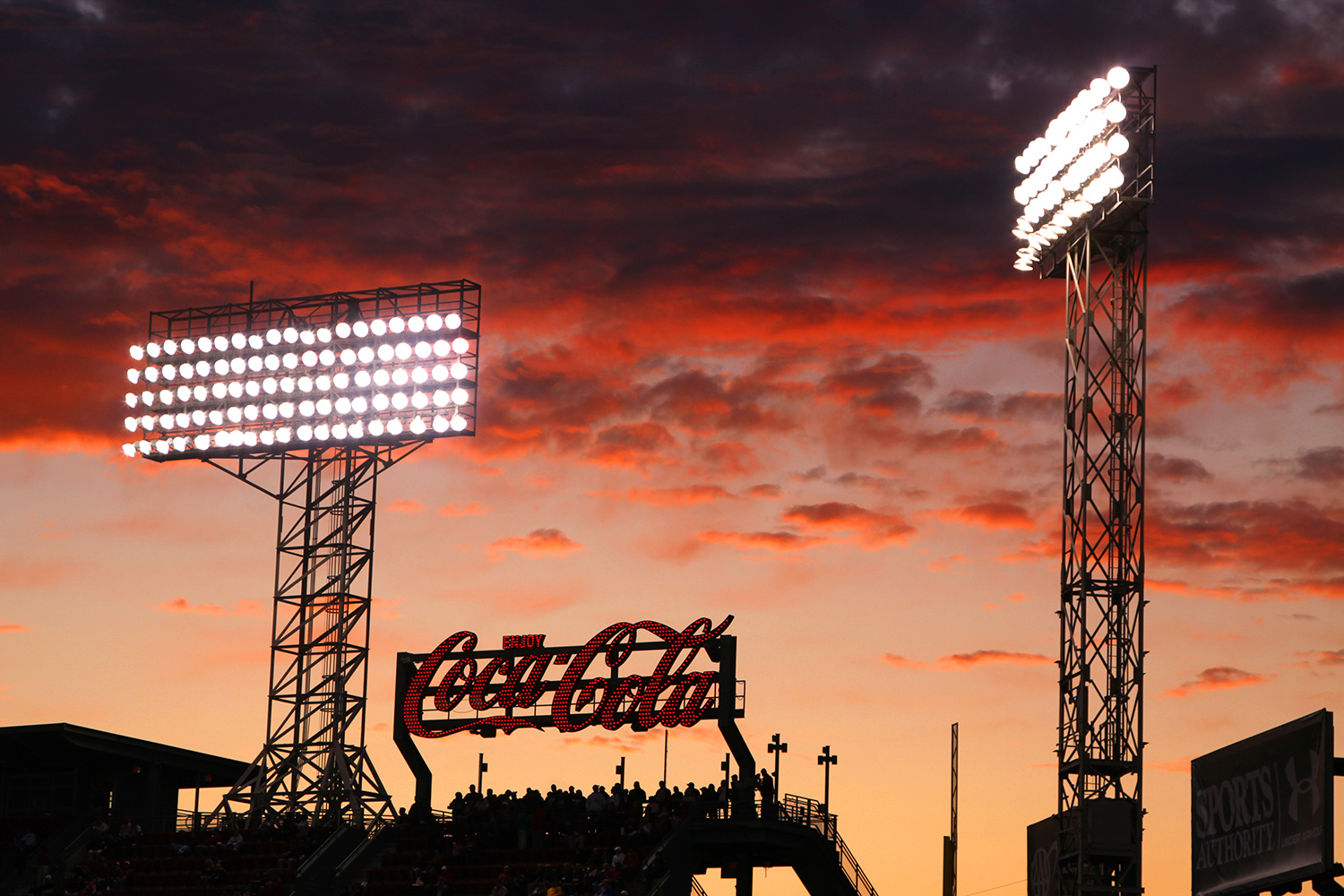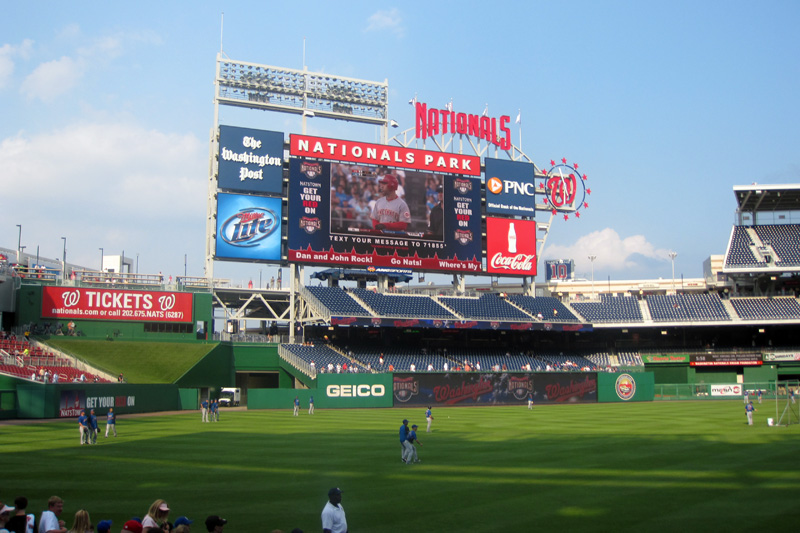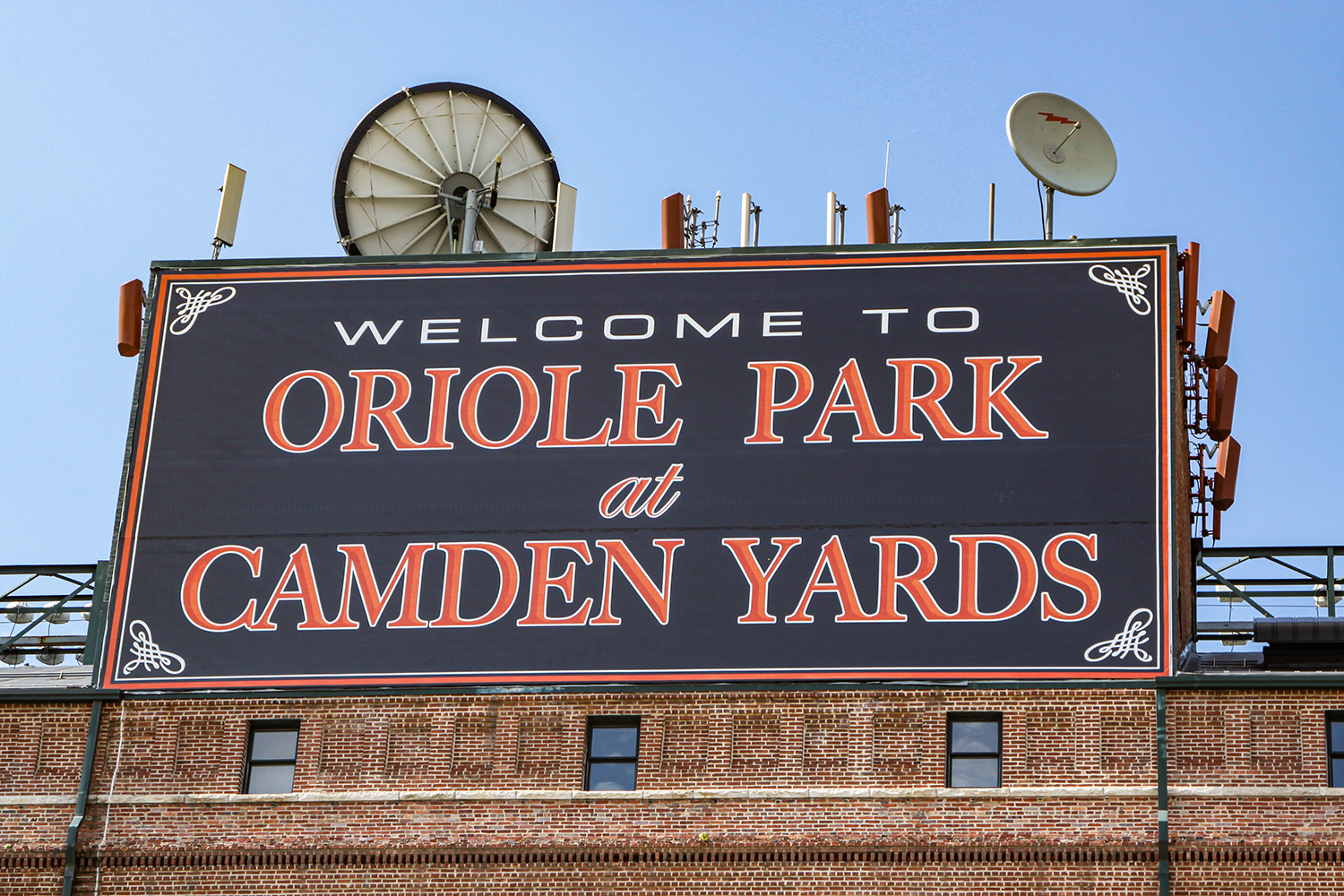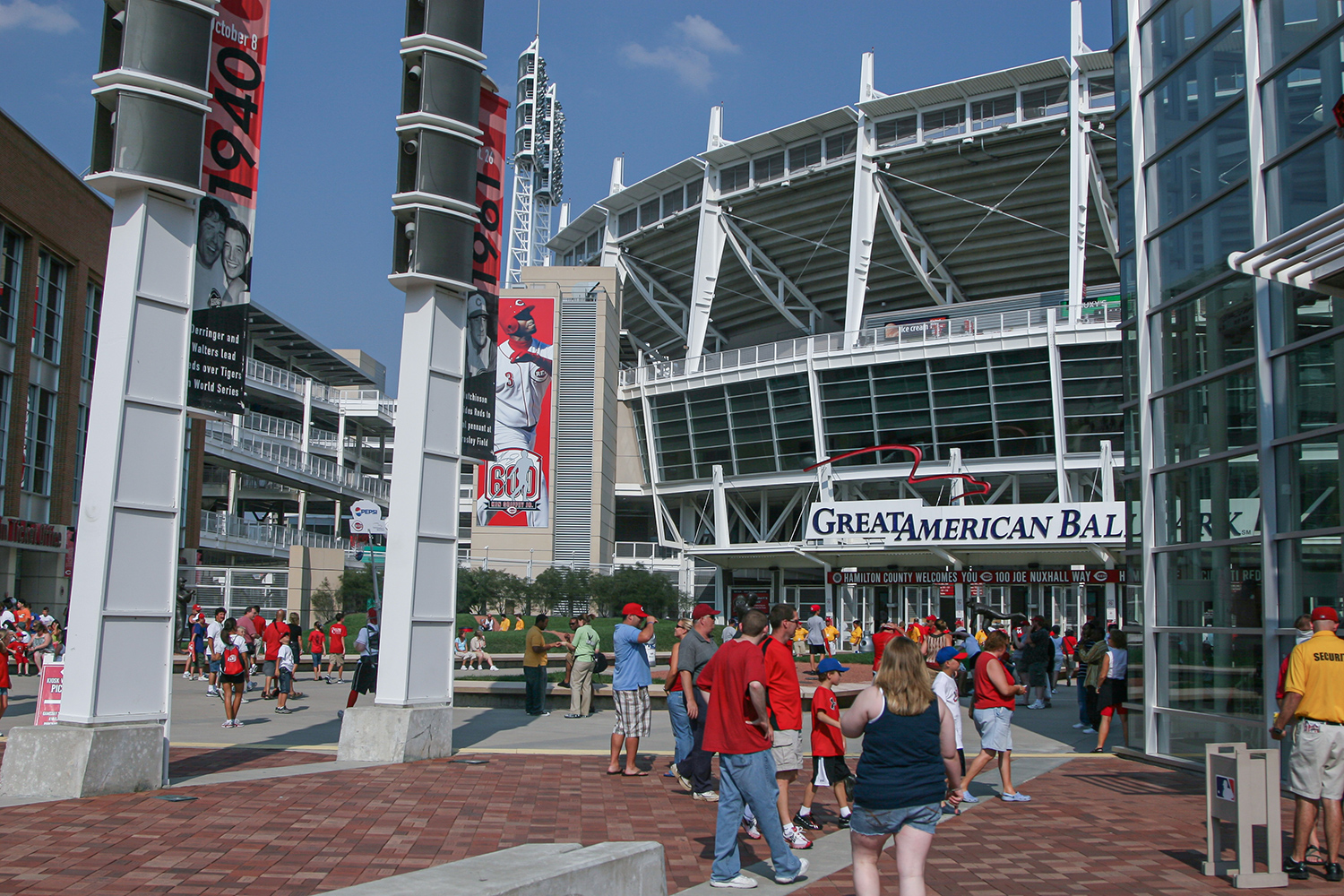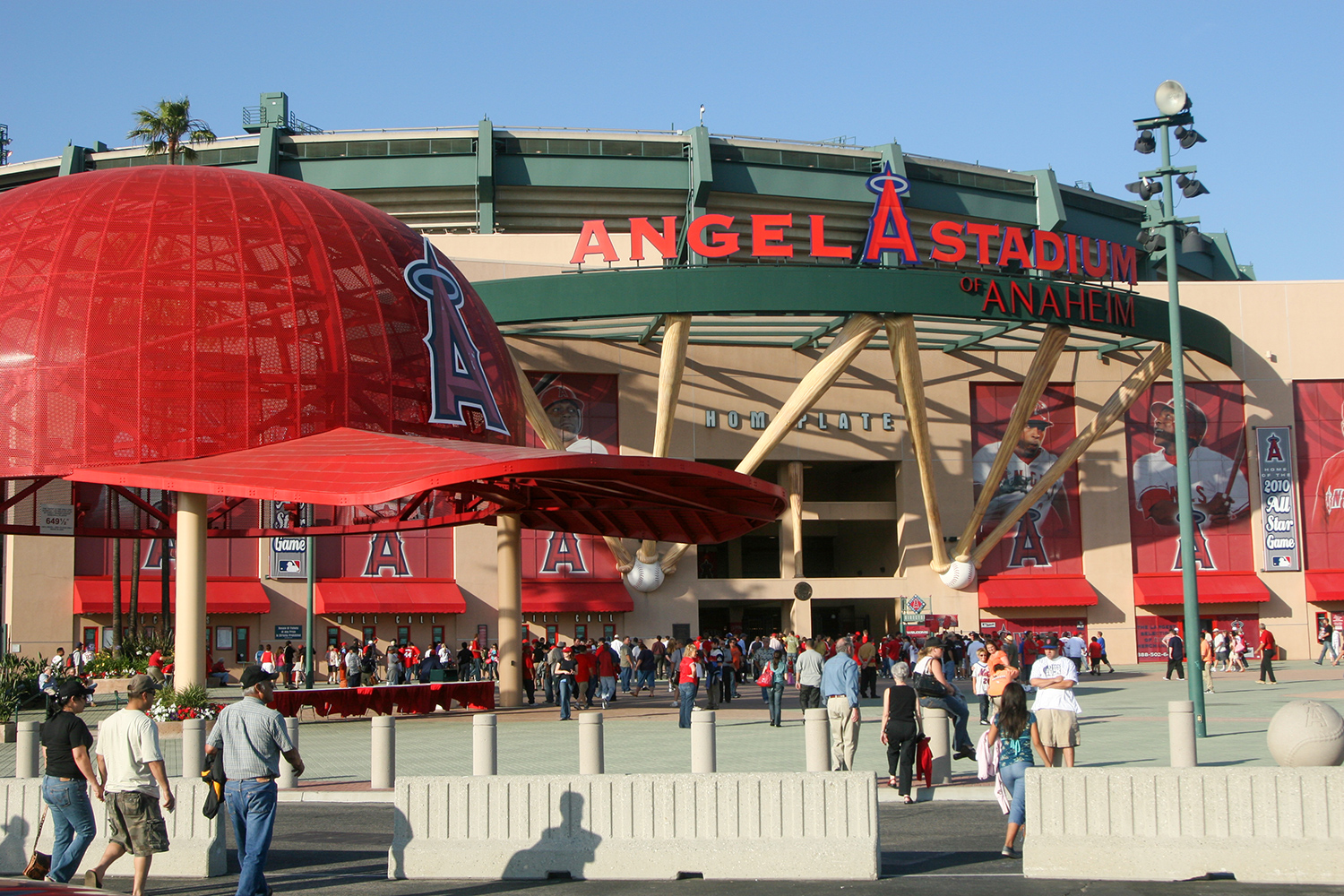Every year I enjoy traveling on vacation to see a ballpark I never visited. Due to the economy, my distaste for flying and rental car costs, gas prices and sleeping in strange places (I can never sleep on the road). I decided to stay local and visit some ballparks only a short bus ride away so I could be home that same day.
My trip started with a visit to Citi Field for a concert by Paul McCartney. To Citizens Bank Park on Monday to see the Cubs play the Phillies followed by Nationals Park on Tuesday to see the Mets and Nats. Wednesday I was at Yankee Stadium where the Orioles took on the Bronx Bombers. On Friday I made it to Fenway Park with a stadium tour and to see the Red Sox play the Orioles.
As a die-hard Mets fan it pains me to say that Paul McCartney was the best performance at Citi Field so far this season.
The first time I went to Citi Field after the Mets installed the fan walk, I looked at this new beautiful park. I saw a couple in their early 50's checking out the new park. The man's father who was near 80 years old sat there teary eyed. The new ballpark awoke memories of a field and team that picked up left Brooklyn after the 1957 season.
Unfortunately that is one of biggest problems with Citi Field. It honors the Brooklyn Dodgers and Jackie Robinson, not the New York Mets. On Opening Day, the ballpark was sterile, no memories of the Mets' 47-year history and two world championship teams. The Dodgers won only one championship while in Brooklyn.
As you enter the Jackie Robinson Rotunda, old images of Brooklyn Dodgers and Ebbets Field are on display. The rotunda is beautiful, but where is the Mets stuff? How about the Giants? Aren't the Mets the team that replaced and the Giants and Dodgers and took their colors and logo? The Mets played their first seasons at the Polo Grounds and then Shea Stadium. I don't see images of those parks, just Ebbets Field and a big number 42.
The ballpark is great, except I wouldn't know you were in New York. It feels like you're at a Met fan on the road. The outfield area is filled with food vendors and areas to eat. Shake Shack is a must. An hour before game time the line is 45 minutes long. I was there at 5:30 and got a burger hot off the grill in a minute with a shake. I went back for seconds and waited one minute.
I have seats in the front row of the Pepsi Porch in right field. Great seats, great view, the porch hangs 8 feet over the field of play. The only problem is when a ball is hit into right field beneath you, you lose the action. People in the third row or further back lose more of the playing field and need assistance from people in front to learn what happened.
Citi Field is a much better and larger facility than Shea Stadium, which you can walk around the entire park at the field level.
The porch was a 20-minute exit to the field, because there's one way up and out. The staircases get cramped and crowded. Security will not let you pass through the Caesars Club to exit down that staircase.
Things move very slowly when you hit the 7 trains, because there's one staircase there with five openings, two of them taped off by the MTA and causing congestion. Maybe the MTA will add an additional entrance/exit near 126th Street and perhaps add a handicap accessible elevator.
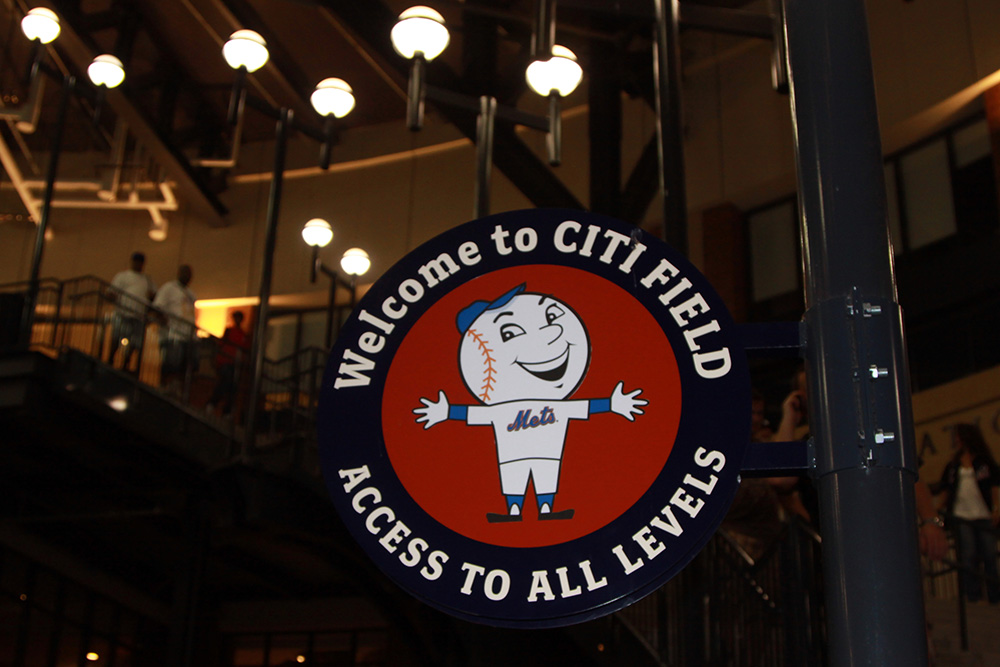
A welcome to Citi Field sign featuring Mr. Mets in the Jackie Robinson Rotunda. Did not know Jackie played with the Mets? (Photo: Gordon Donovan)
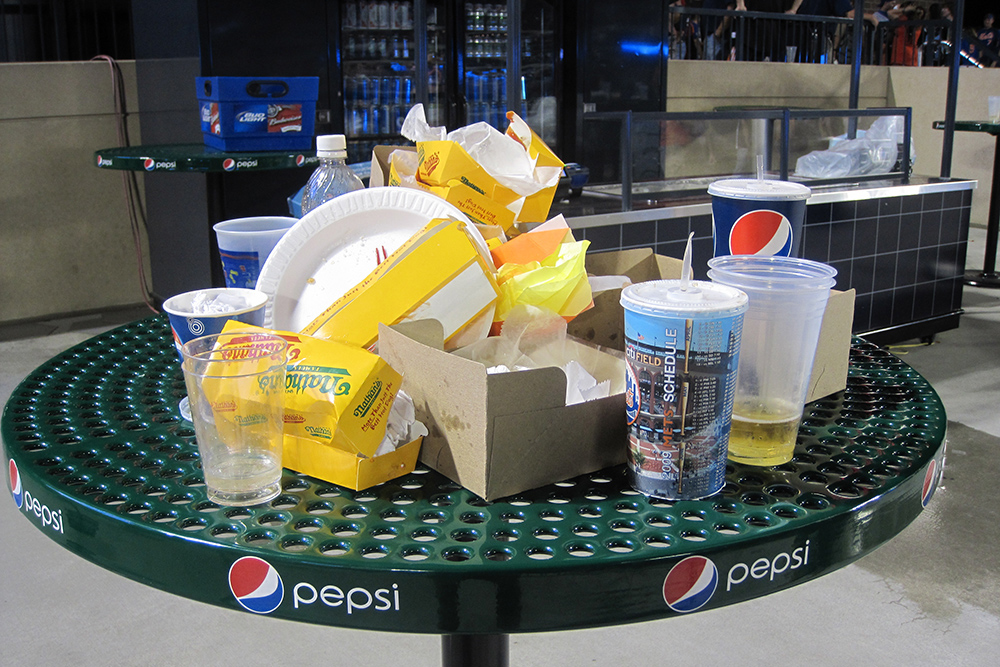
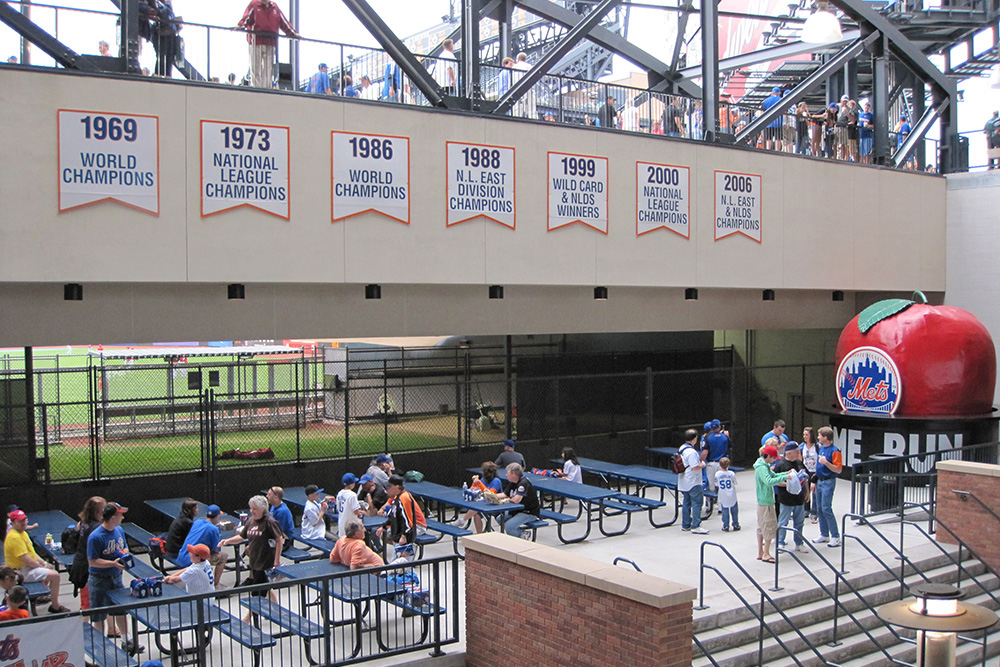
One of the few things the Mets have added since the season started to honor their past. In the bullpen gate you will find the Mets championship and pennant markers near the home run apple. (Photo: Gordon Donovan)
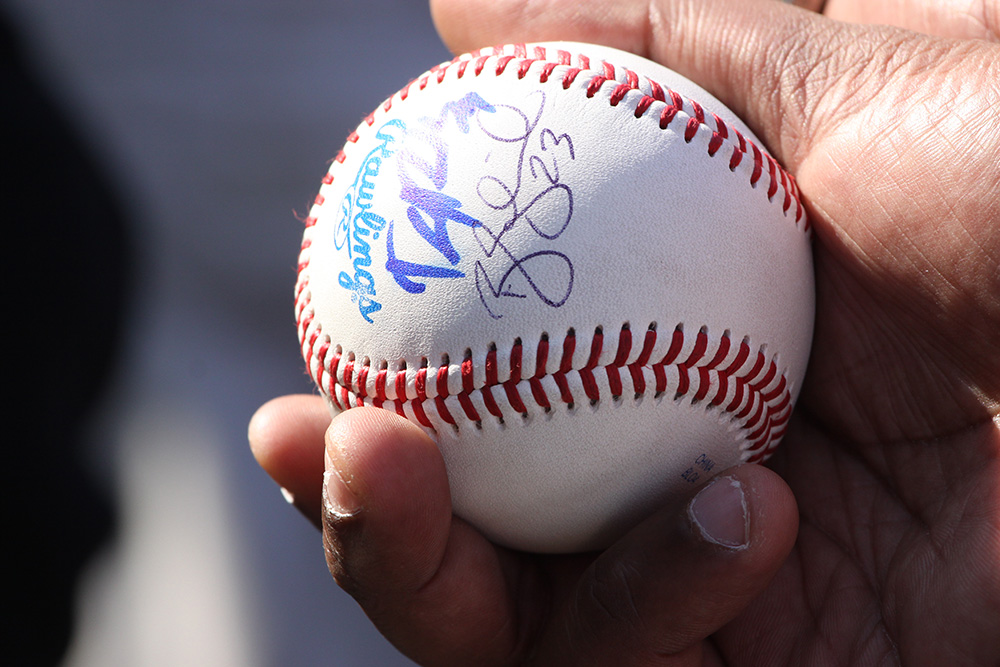
A fan holds a baseball autographed by a Mets player before the baseball game at Citi Field in New York City. (Photo: Gordon Donovan)
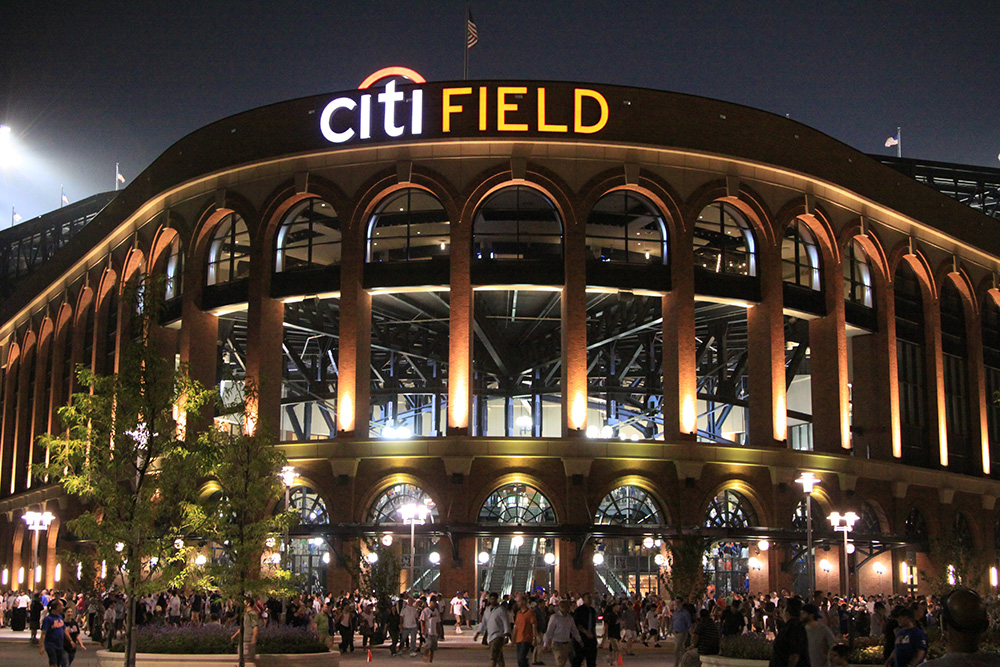
Citi Field, the new home of the New York Mets, glows at night while fans exit the park following the Mets 4-0 victory over the Colorado Rockies. As a life-long Mets fan, it pains me to say that Paul McCartney was the best performance at Citi Field so far this season. (Photo: Gordon Donovan)
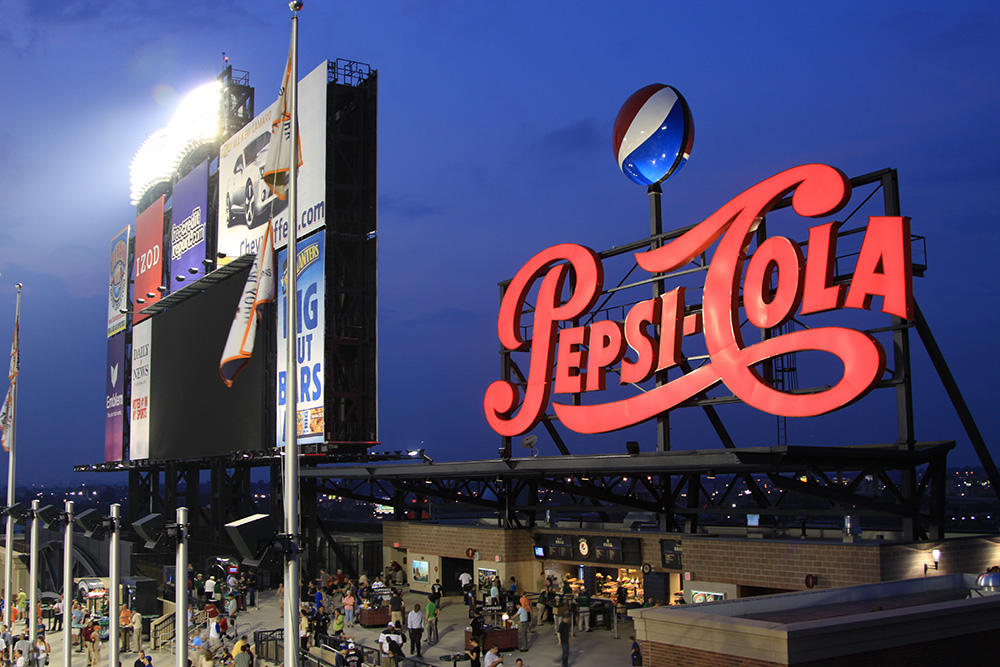
The Pepsi Cola sign above the Pepsi Porch. The porch reminds people of the one at Tiger Stadium. Great seats, great view, the porch hangs 8 feet over the field of play. The only problem is when a ball is hit into right field beneath you, you lose the action. (Photo: Gordon Donovan)

Opening Day at Citi Field between the San Diego Padres and the New York Mets on April 13, 2009. Citi Field is the third home for the Mets since 1962. (Photo: Gordon Donovan)

A fan holds up a sign in the Pepsi Porch displaying his disappointment over the team's poor play in the inaugural season at Citi Field. (Photo: Gordon Donovan)

Fans walk across the Shea Bridge in centerfield. Unlike Shea Stadium, fans can walk around the concourse on the main field level. (Photo: Gordon Donovan)
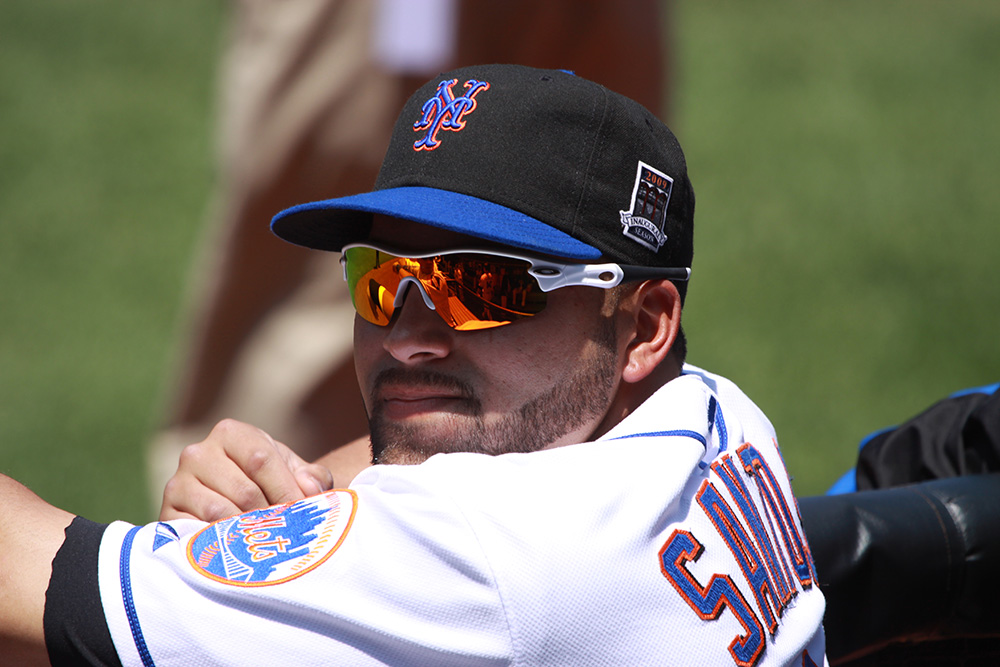
New York Mets catcher Omir Santos enjoys a day off on a beautiful day at Citi Field. (Photo: Gordon Donovan)
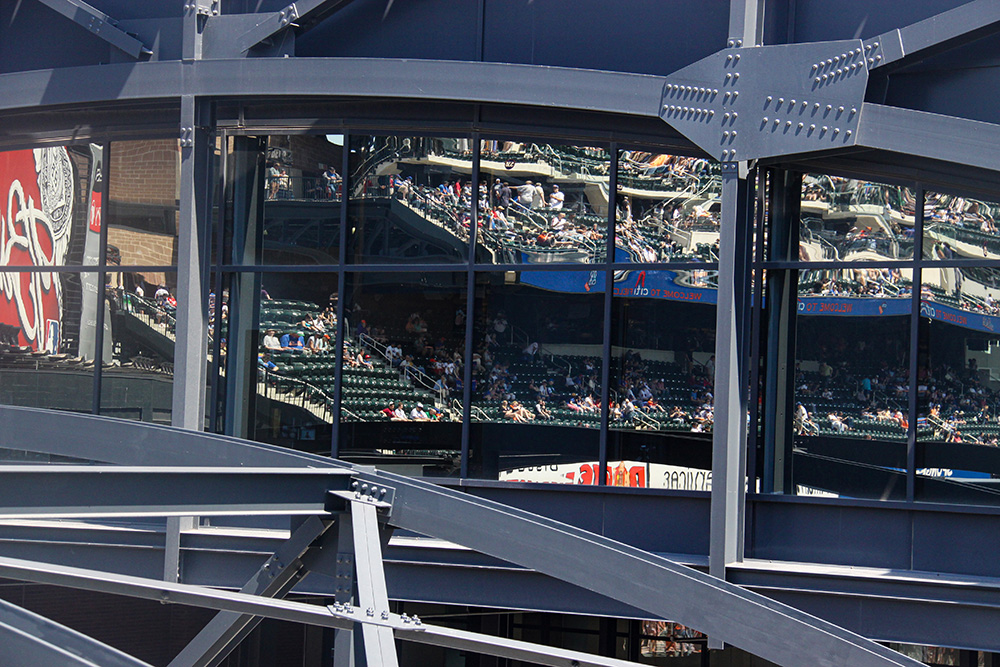
The seats are mirrored off the windows of the Mets offices past the Shea Bridge in the outfield at Citi Field. (Photo: Gordon Donovan)
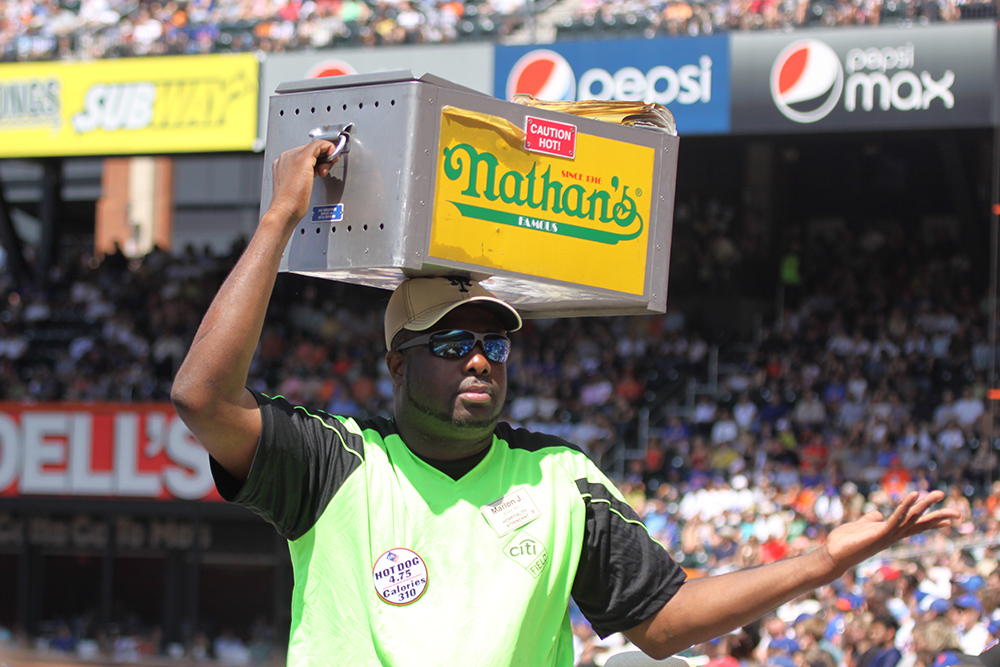
A vendor looks for a customer to purchase one of his overpriced hot dogs. (Photo: Gordon Donovan)
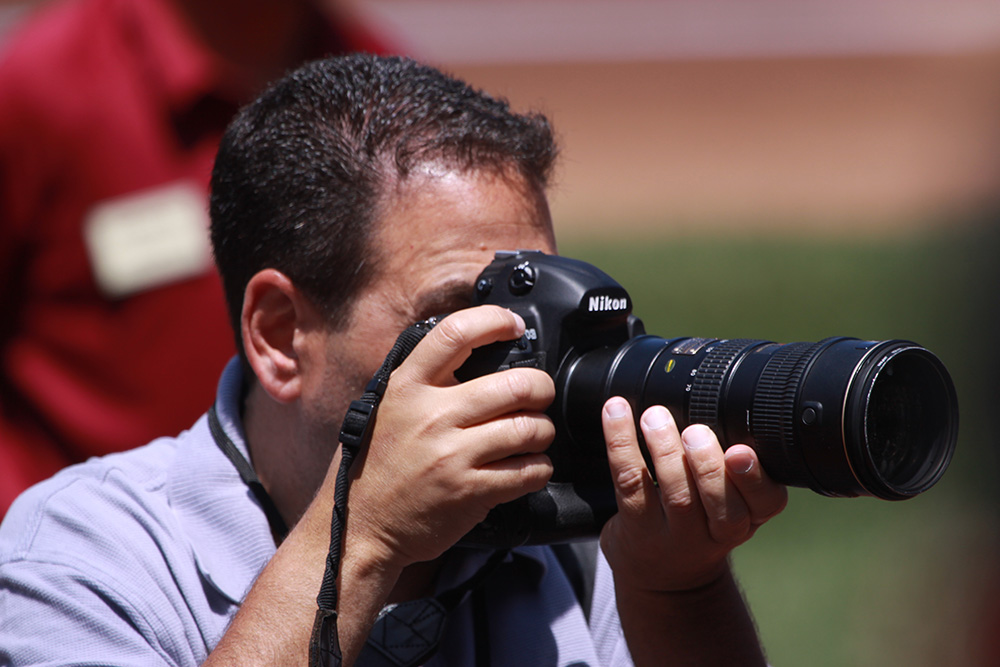
A photographer for the New York Mets searches the seats for a happy face during a disappointing first season at Citi Field. Many believe the ballpark was built on an old burial grounds and is responsible for all the team's woes and injuries. (Photo: Gordon Donovan)
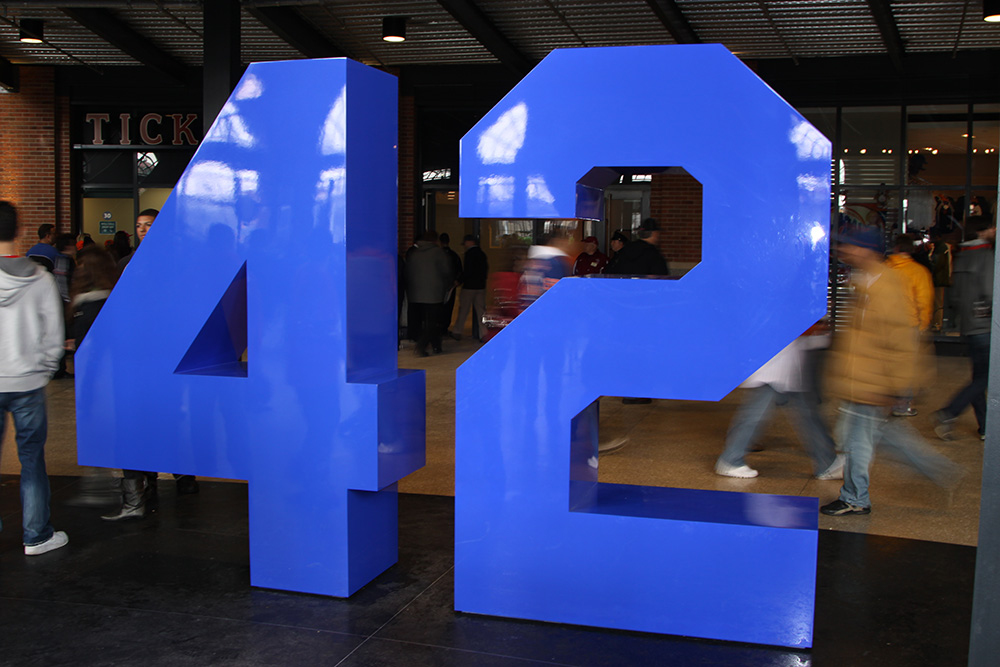
The rotunda is beautiful, but where is the Mets stuff? Aren't the Mets the team that replaced and the Giants and Dodgers and took their colors and logo? The Mets played their first seasons at the Polo Grounds and then Shea Stadium. I don't see any images of those parks, just a big number 42. (Photo: Gordon Donovan)
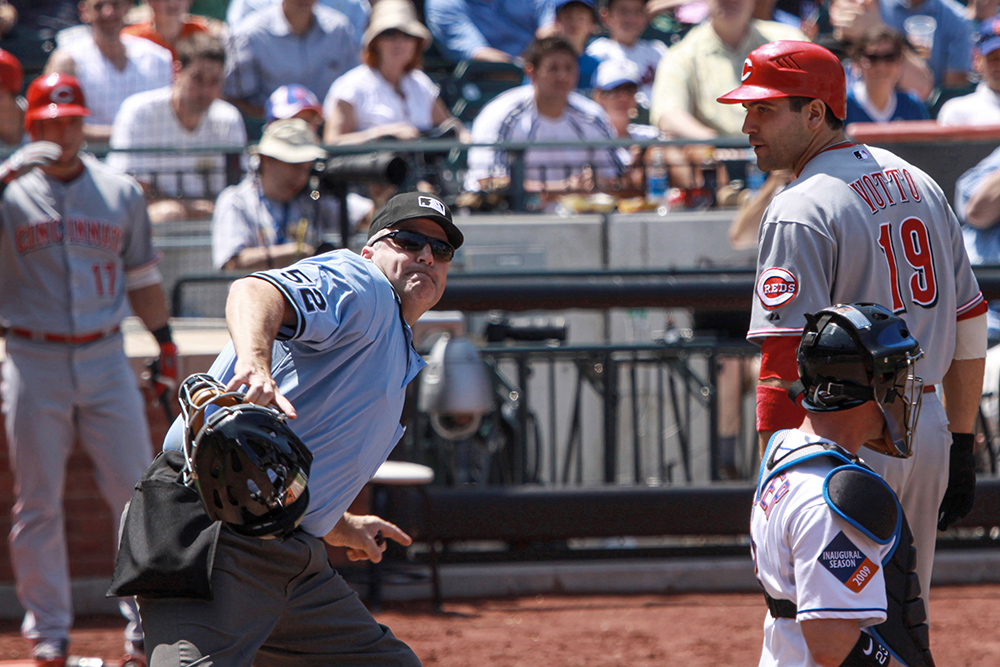
Cinncinnati Reds All-Star Joey Votto gets ejected by home plate umpire Bill Welke for arguing balls and strikes in the 4th inning against the Mets. (Photo: Gordon Donovan)
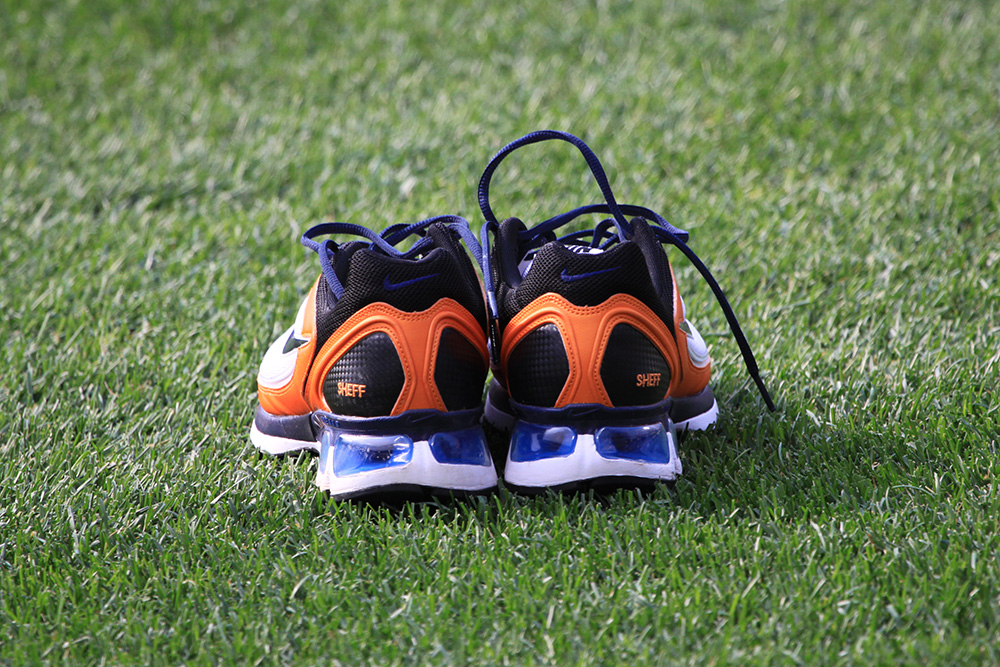
The sneakers of Mets outfielder Gary Sheffield sit on the outfield grass at Citi Field during batting practice, Tuesday, July 29, 2009. (Photo: Gordon Donovan)
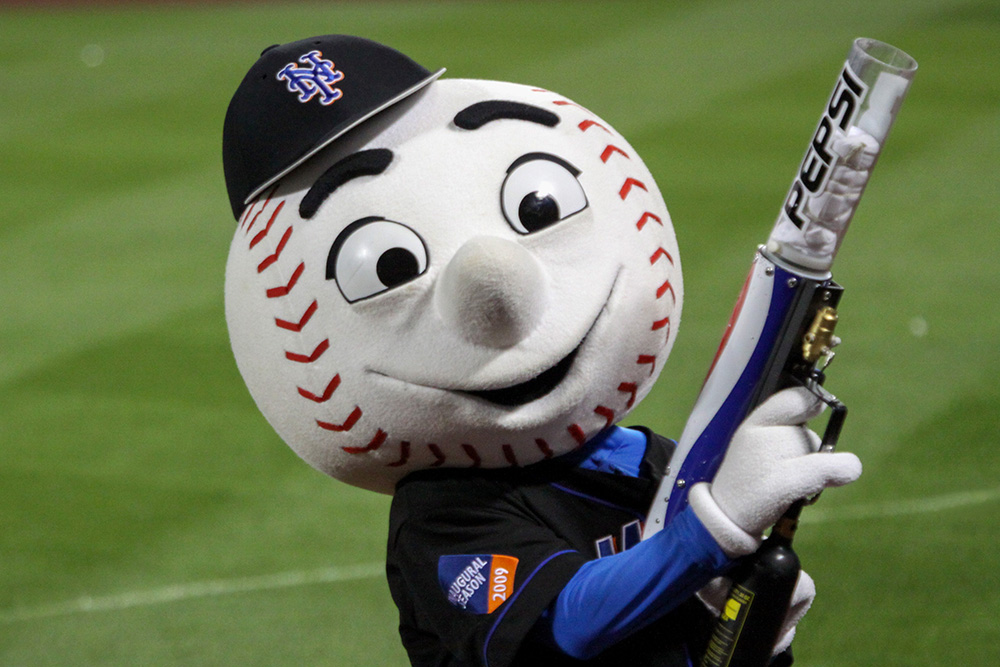
Mets mascot Mr. Met shoots t-shirts during the crowd with the Pepsi Party Patrol during the seventh inning stretch. (Photo: Gordon Donovan)
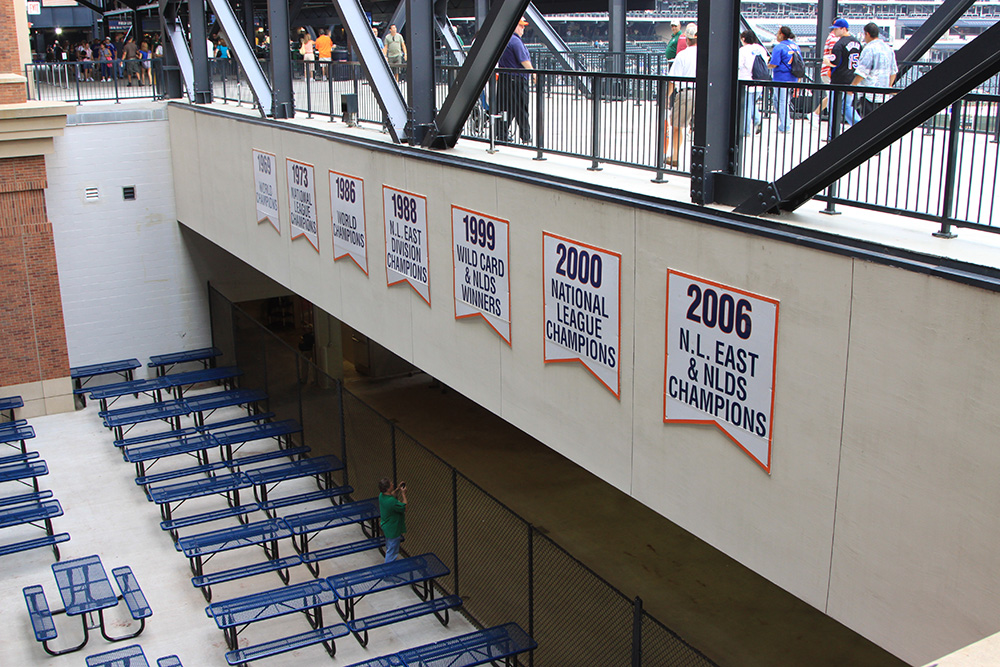
One of the few things the Mets have added since the season started to honor their past. In the bullpen gate you will find the Mets championship and pennant markers near the home run apple. (Photo: Gordon Donovan)
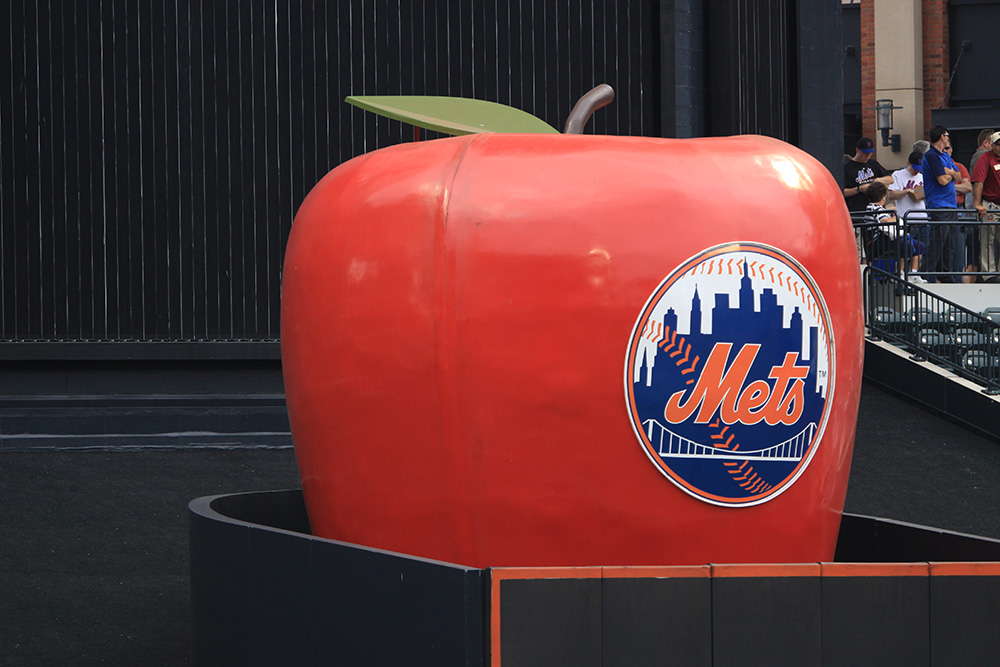
The seldom used new Home Run Apple in center field. The new ballpark with larger dimensions has made it harder for teams to blast home runs at Ciit Field. (Gordon Donovan)

Unfortunately, one of the biggest problems with Citi Field is that it honors the Brooklyn Dodgers and Jackie Robinson, not the New York Mets. (Photo: Gordon Donovan)
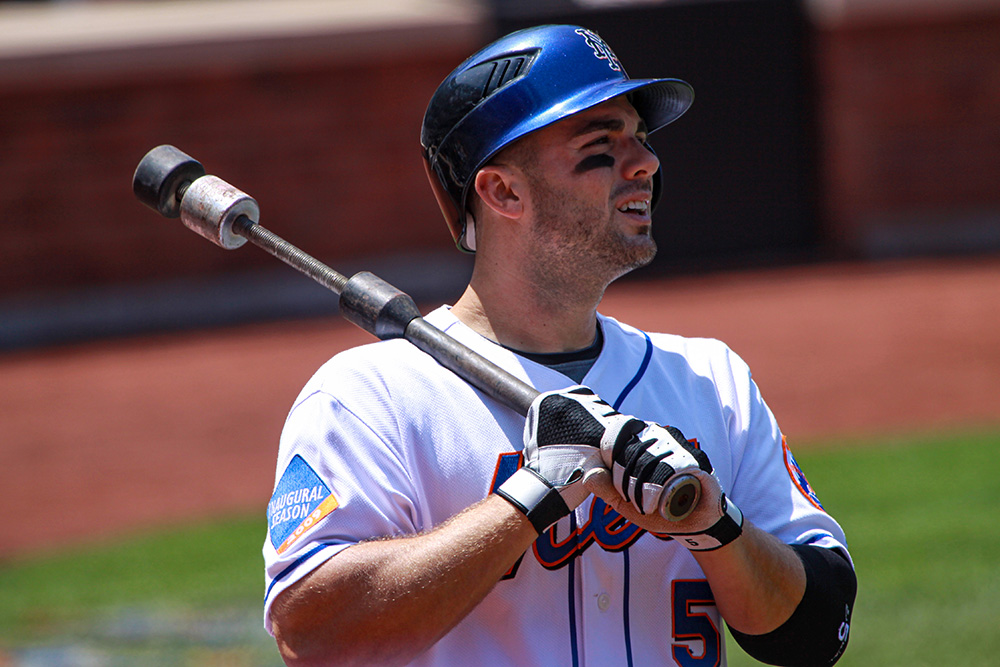
New York Mets David Wright stands on deck during a baseball game against the Cincinnati Reds. (Photo: Gordon Donovan)
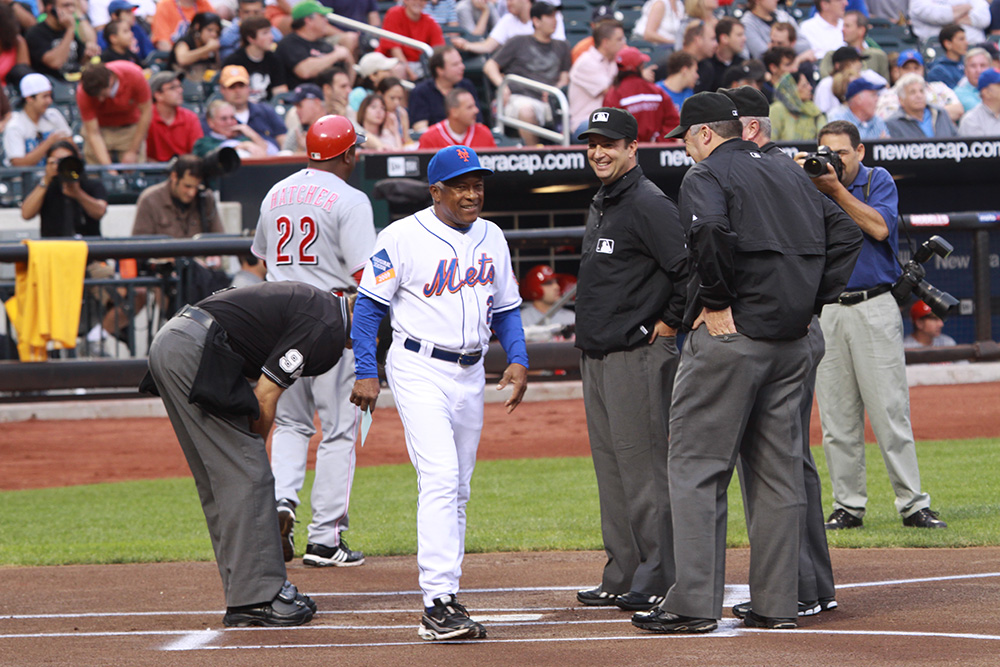
New York Mets bench coach Sandy Alomar brings out the line up card before the game against the Cincinnati Reds. (Photo: Gordon Donovan)

No tributes to the New York Giants, although Jeff Wilpon said the seats match the color of the seats at the Polo Grounds. (Photo: Gordon Donovan)
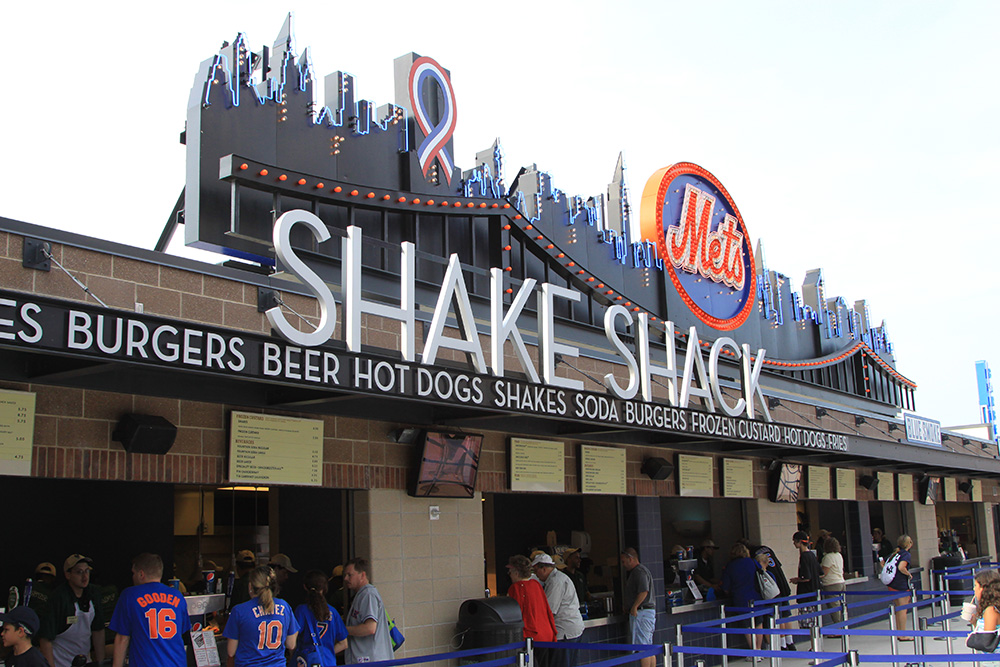
The center field area is filled with food vendors and areas to eat, including the Shake Shack. Behind the center field scoreboard is the 2K Sports FanFest area, an expanded family entertainment area that includes a miniature wiffleball field replica of Citi Field. (Photo: Gordon Donovan)

The beautful front entrance of Citi Field features a rotunda named after Brooklyn Dodgers legend Jackie Robinson and honors his life and accomplishments. (Photo: Gordon Donovan)
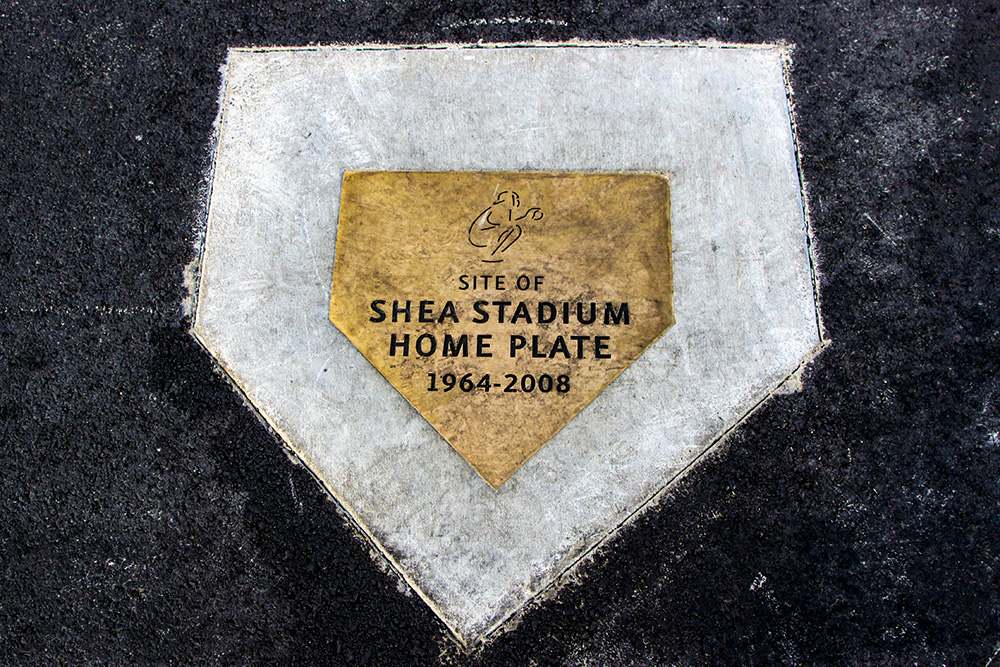
Markers in place where the bases and home plate were located in Shea Stadium in the parking lot. (Photo: Gordon Donovan)

The beautiful brick facade of Citi Field that is reminiscent of Ebbets Field in Brooklyn, former home of the Dodgers. The Mets played in Shea Stadium for 44 seasons, the Dodgers played at Ebbets Field for 45 seasons. (Photo: Gordon Donovan)
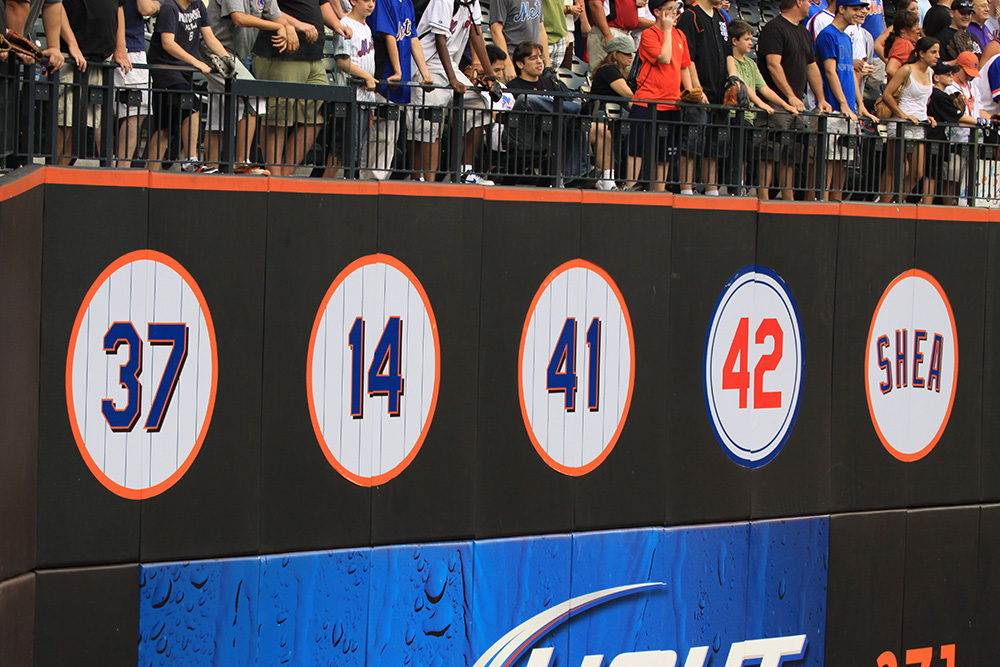
Retired numbers of the Met managers Casey Stengel, Gil Hodges, Hall of Fame Mets pitcher Tom Seaver, Brooklyn Dodger great Jackie Robinson and Bill Shea, who brought National League baseball back to New York. (Photo: Gordon Donovan)
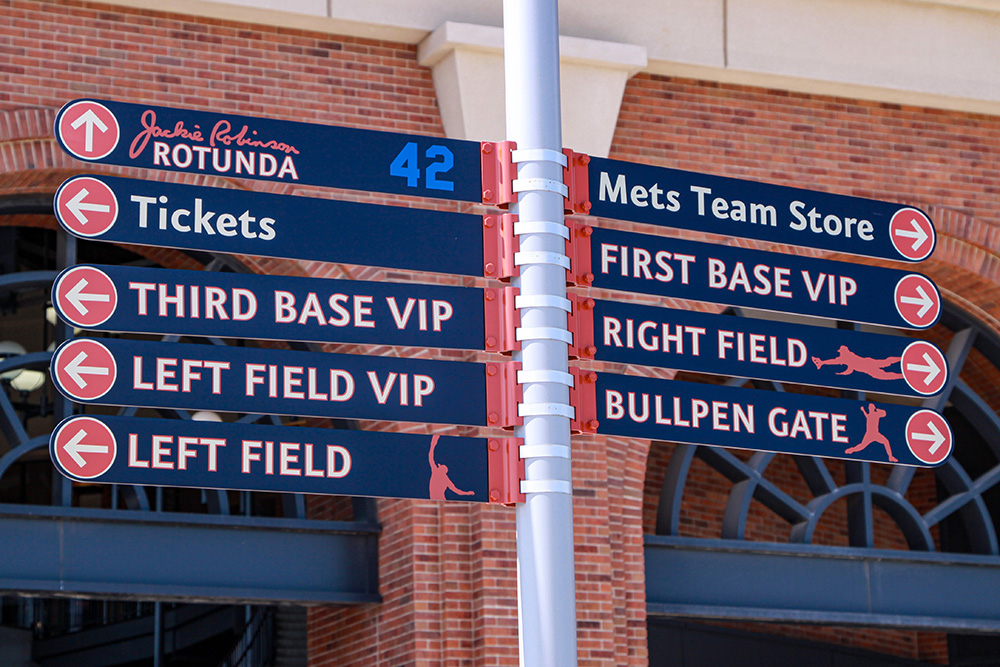
Directional markers outside of Citi Field to help fans get lost at new ballpark. (Photo: Gordon Donovan)
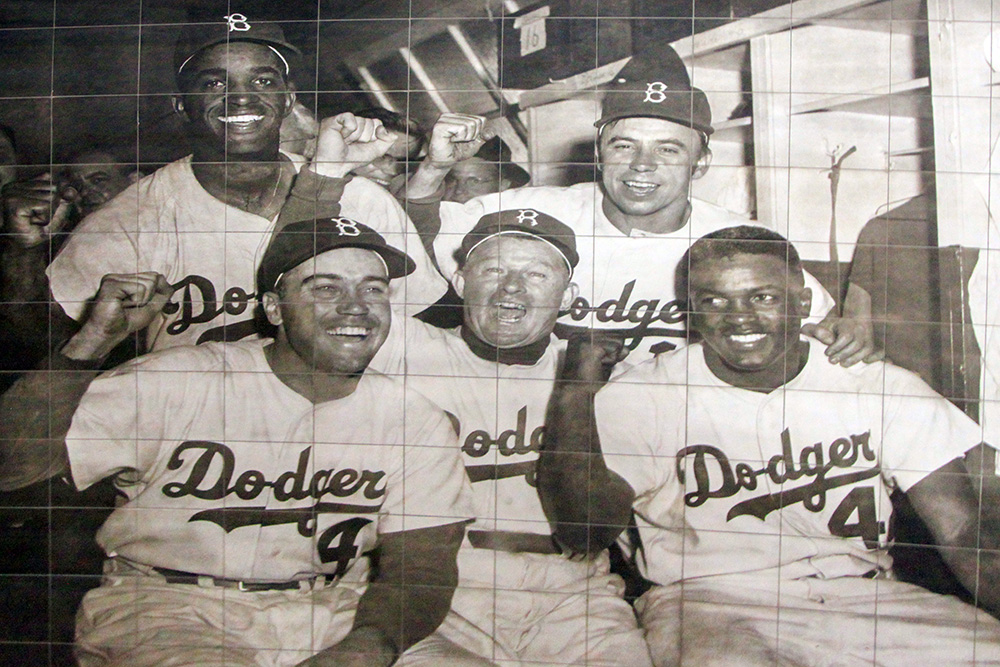
On Opening Day, the ballpark was sterile, with no memories of the Mets' 47-year history and two world championship teams. The Dodgers won only one championship while in Brooklyn. As you enter the Jackie Robinson Rotunda, images of Brooklyn Dodgers and Ebbets Field are on display. (Photo: Gordon Donovan)

The first time I went to Citi Field after the Mets installed the fan walk, I looked at this new beautiful park I saw a couple in their early 50's checking out the new park. The man's father, who was near 80 years, old sat there teary-eyed. The new ballpark awoke memories of a field and team that picked up and left Brooklyn after the 1957 season. (Photo: Gordon Donovan)
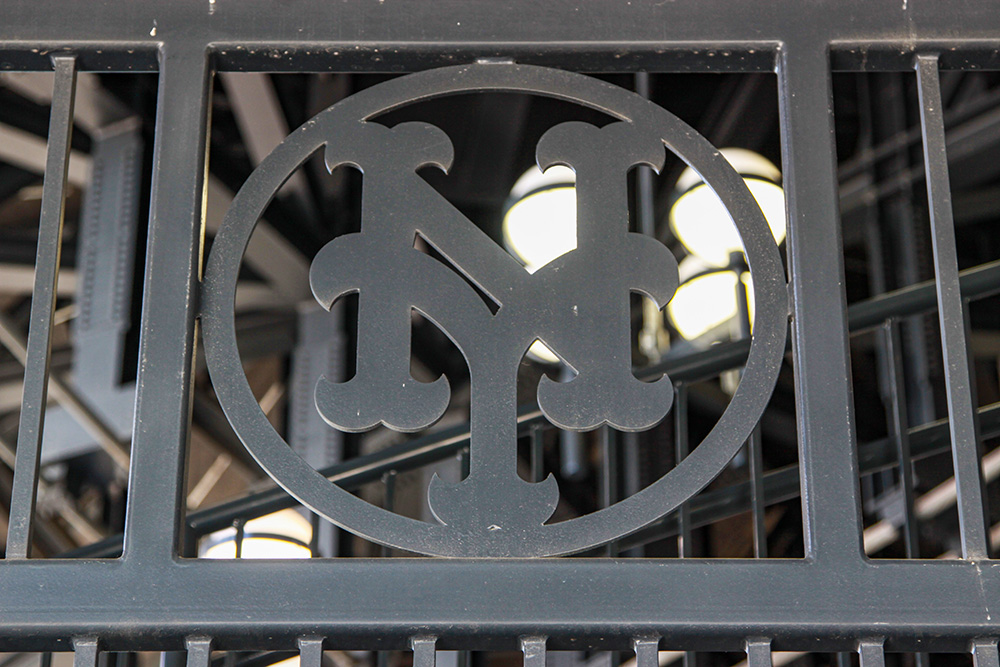
The New York Mets, founded in 1962, returned National League baseball to New York following the departure of the Brooklyn Dodgers to Los Angeles and the New York Giants to San Francisco. The Mets' uniform was designed to incorporate elements of both departed clubs, with the Dodgers' royal blue becoming the Mets' primary color and the Giants' orange the trim color, along with the Giants' "NY" crest adopted as the new team's cap logo. (Photo: Gordon Donovan)
Ballpark: B – New ballpark, upgrade from Shea Stadium. More bathrooms, elevators and restaurants. Some bad sight lines and seating. Lose plays down the line from some seats. Can’t see the field from the main concourse behind home plate or food court in centerfield. Seats are more cramped with long rows and so called extended leg room. No more box seats. No more great firework nights since the stadium is enclosed. Lovely view of chop shops now.
Fans & Atmosphere: B – Great new ballpark and baseball scene despite Mets fans whining and wanting to fire or trade everybody. Great for families but overpriced. Tickets in Pepsi Porch Gold (front row) - $60.00 a ticket and you can't see right field beneath you. One fan with a big mouth called Mr. Bingo abused Mets outfielder Carlos Beltran the entire game.
Food: A – Shake Shack burgers and shakes are a must. Great fries across the way at Box Frites. Sausage and pepper hero sandwiches are excellent. Food Cost - $30.50. Not enough tables to eat.
Mascot: A – Mr. Met, its Mr. Met. He should abuse a Phillie Phanatic stuffed doll.
Staff: B – Great friendly staff, a few in a bad mood or think they own the park, it's New York after all. Ushers always have a hand out and security is a bunch of what-to-be cops.
Team Tradition: D – Mets history is all but absent, you feel like you're at a Mets game on the road. Brooklyn Dodgers are represented in the Jackie Robinson Rotunda. Nothing about New York Giants, although Jeff Wilpon said the seats match the color of Polo Grounds. Slowly they have been elements, pennants and banners. Plans are being made for a Hall of Fame in the Bullpen Gate area. They laid bases and home plate from Shea in the actual spot where the parking lot is now. They did bring the Home Run Apple and old scoreboard's NYC skyline over from Shea.
Location: B – The ballpark is in the old parking lot next to where Shea Stadium stood in Corona, Queens. Lots of parking, 7 trains is the best way in and out. Train station needs to be renovated and handicap accessible.
Photos taken July 11-12 and 28, 2009 using a Canon EOS 50D Digital SLR with a EF 24-105mm f/4L IS USM Standard Zoom Lens, EF 100-400mm f/4.5-5.6L IS USM Telephoto Zoom Lens.
